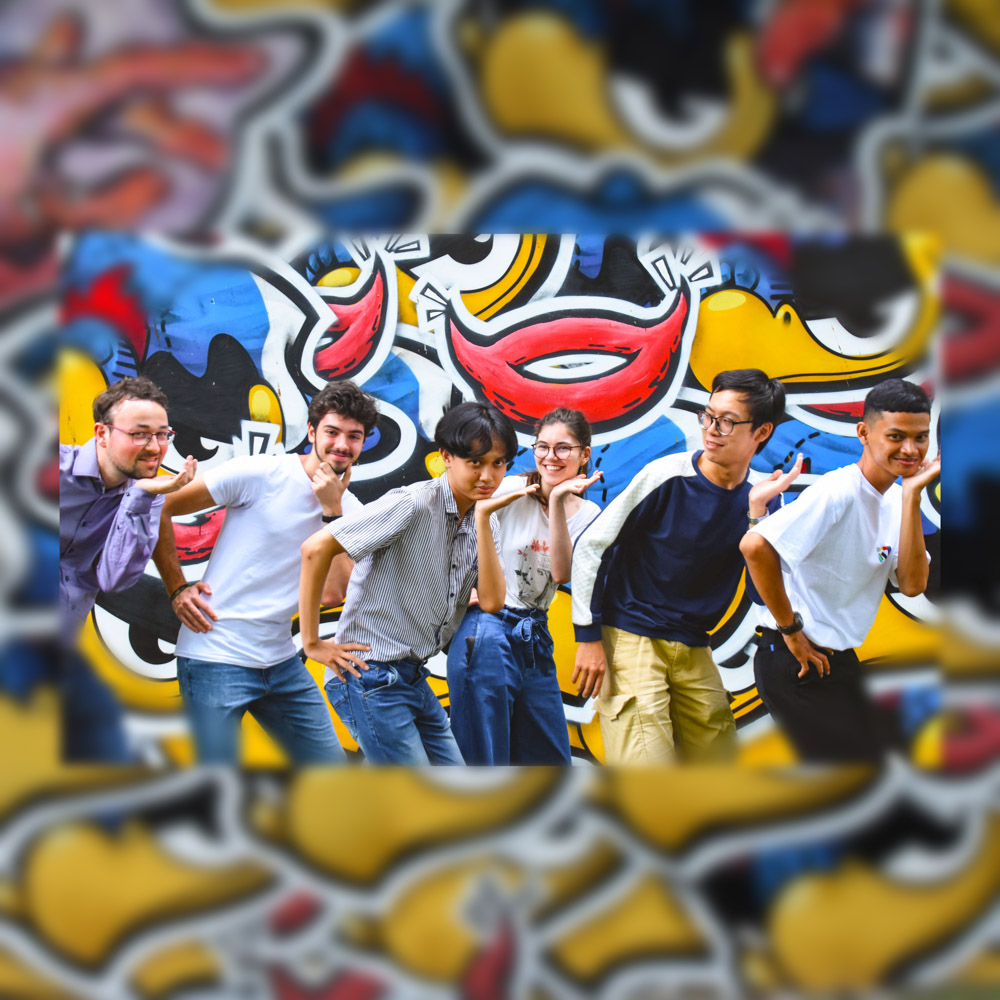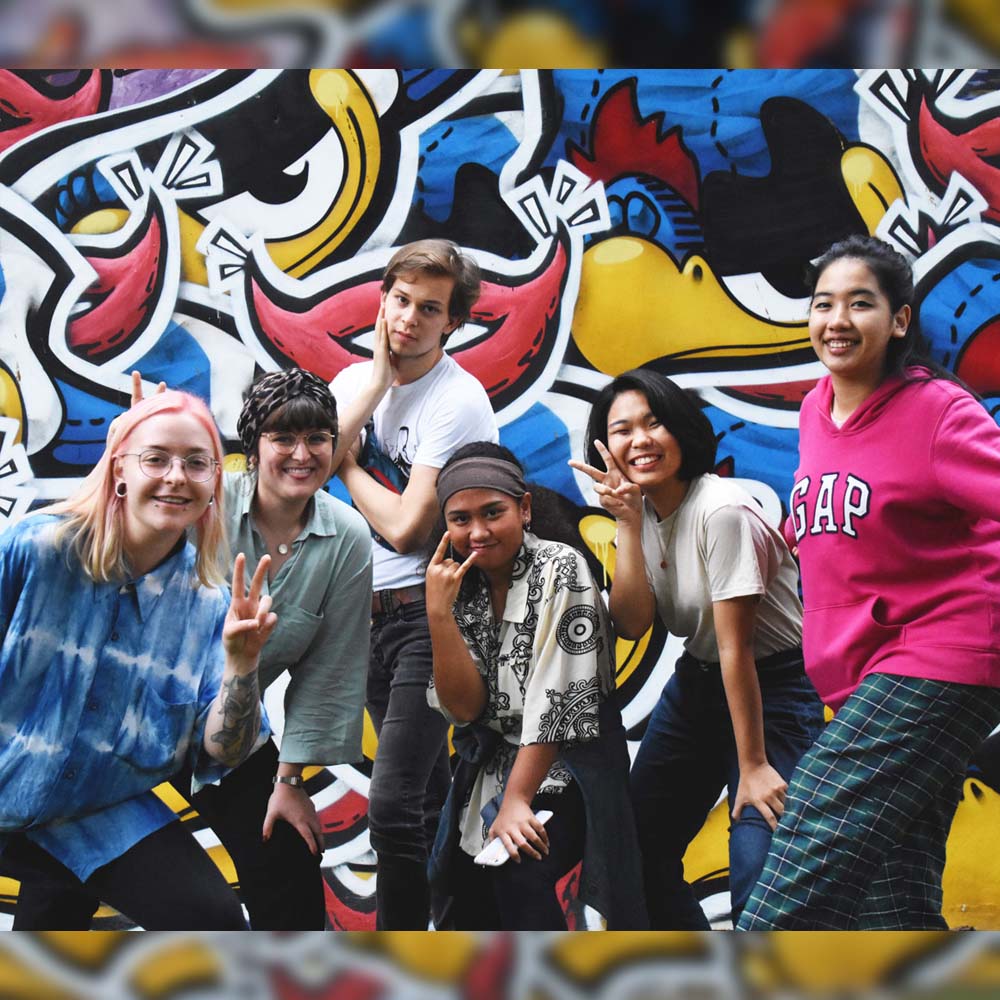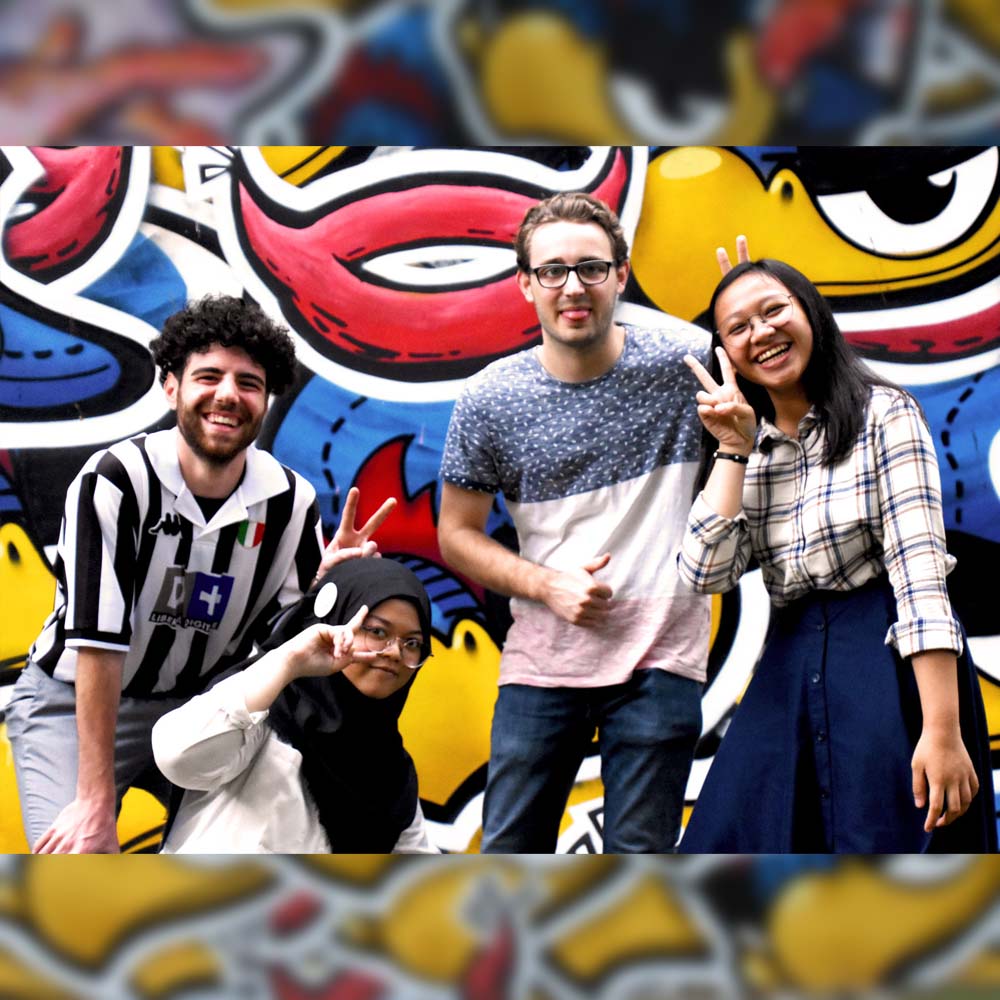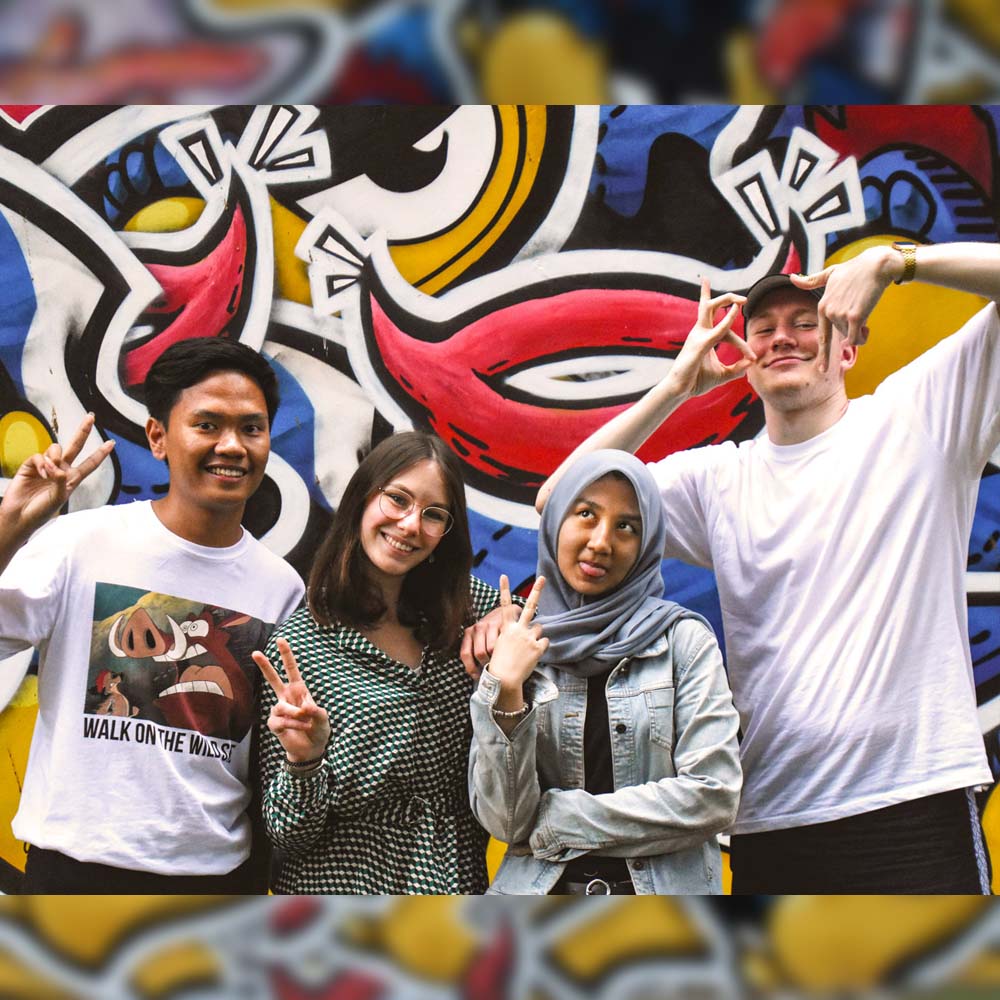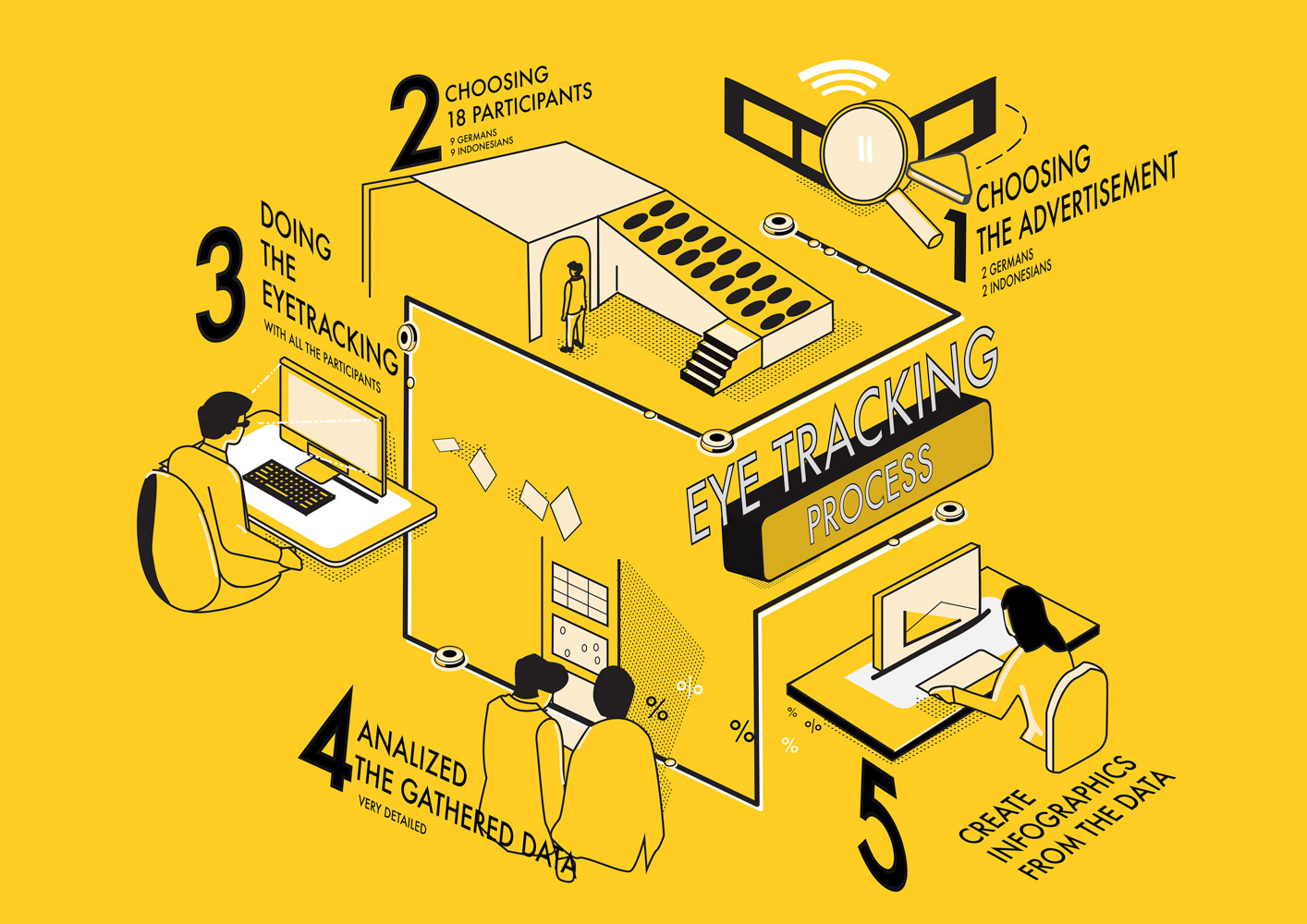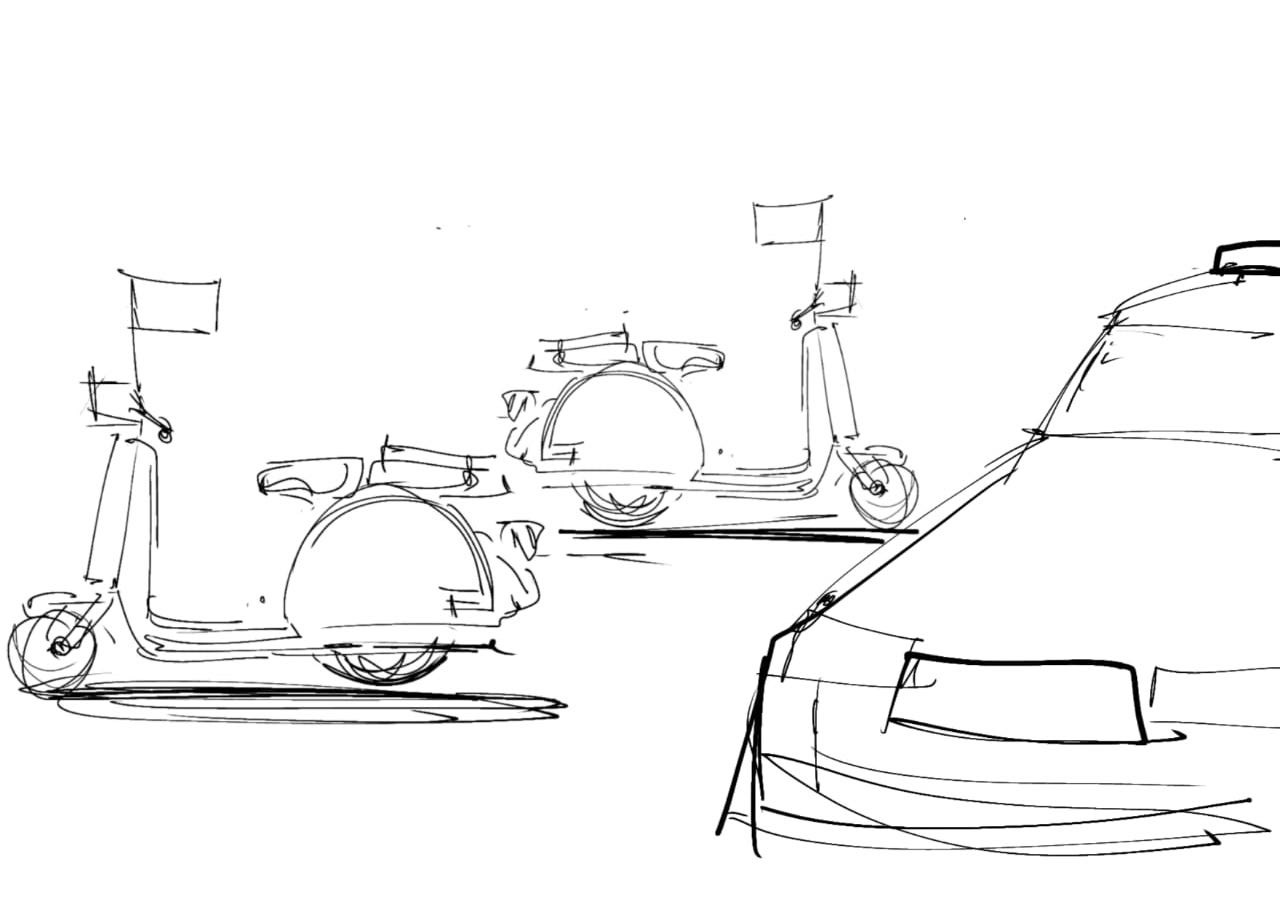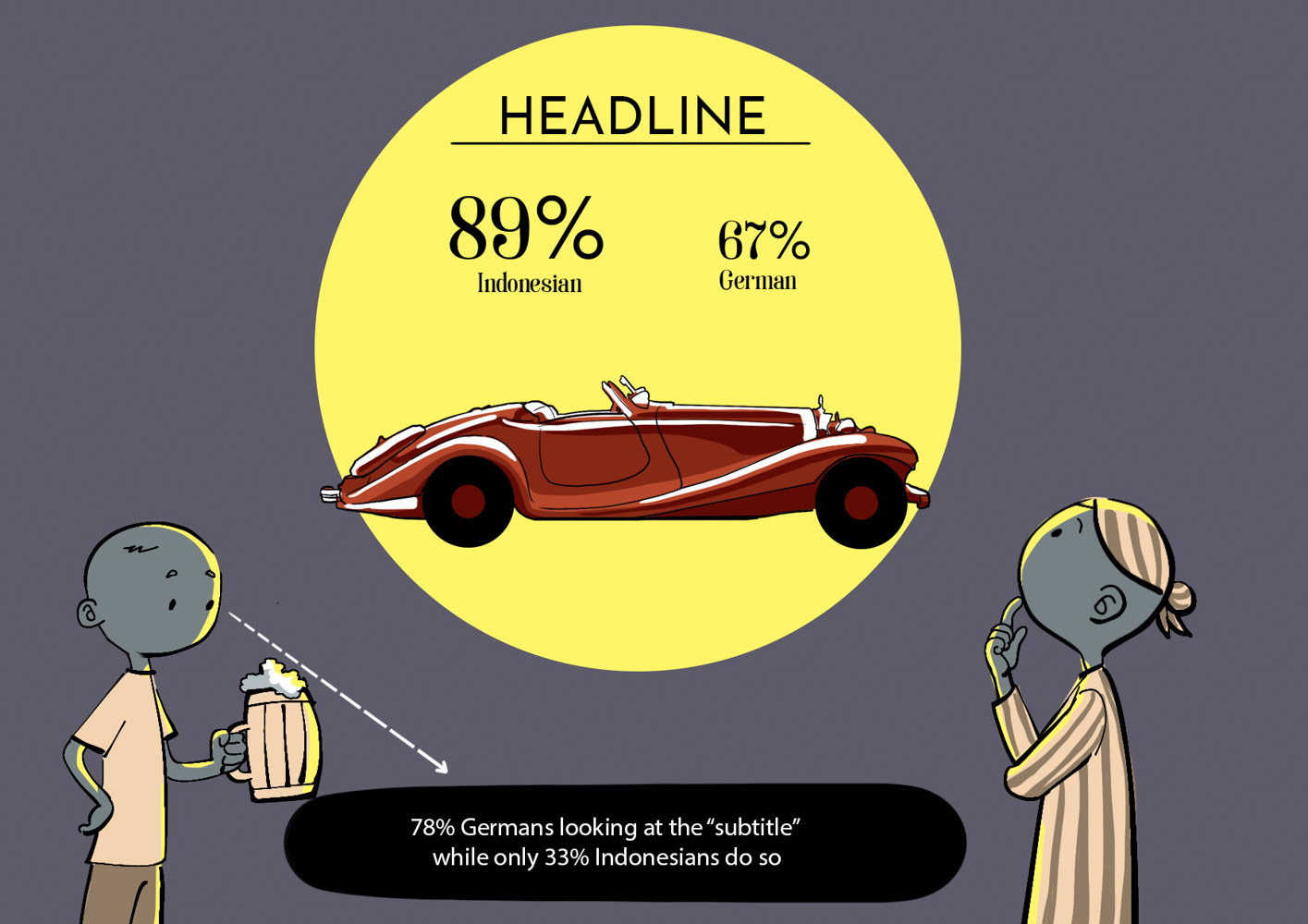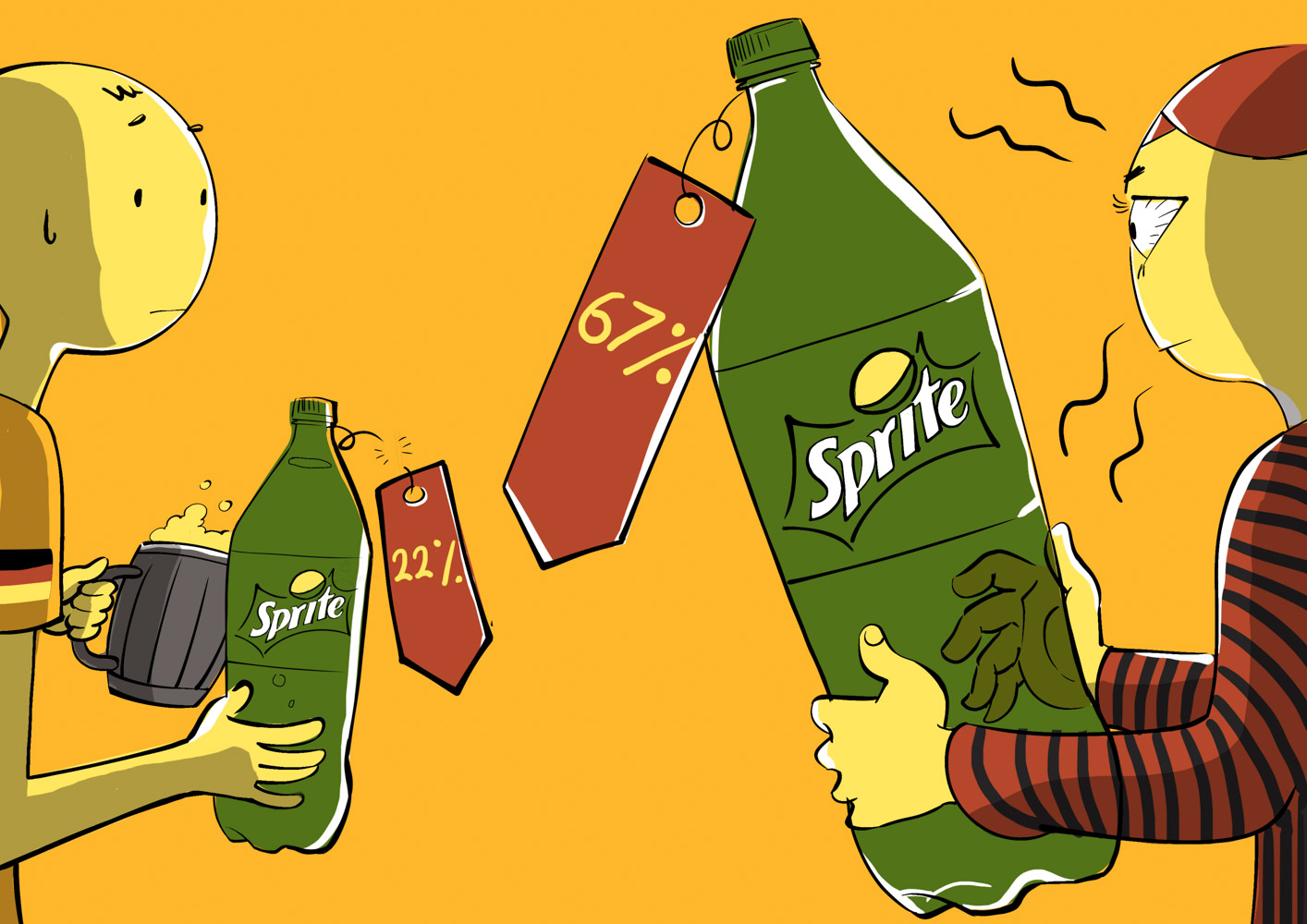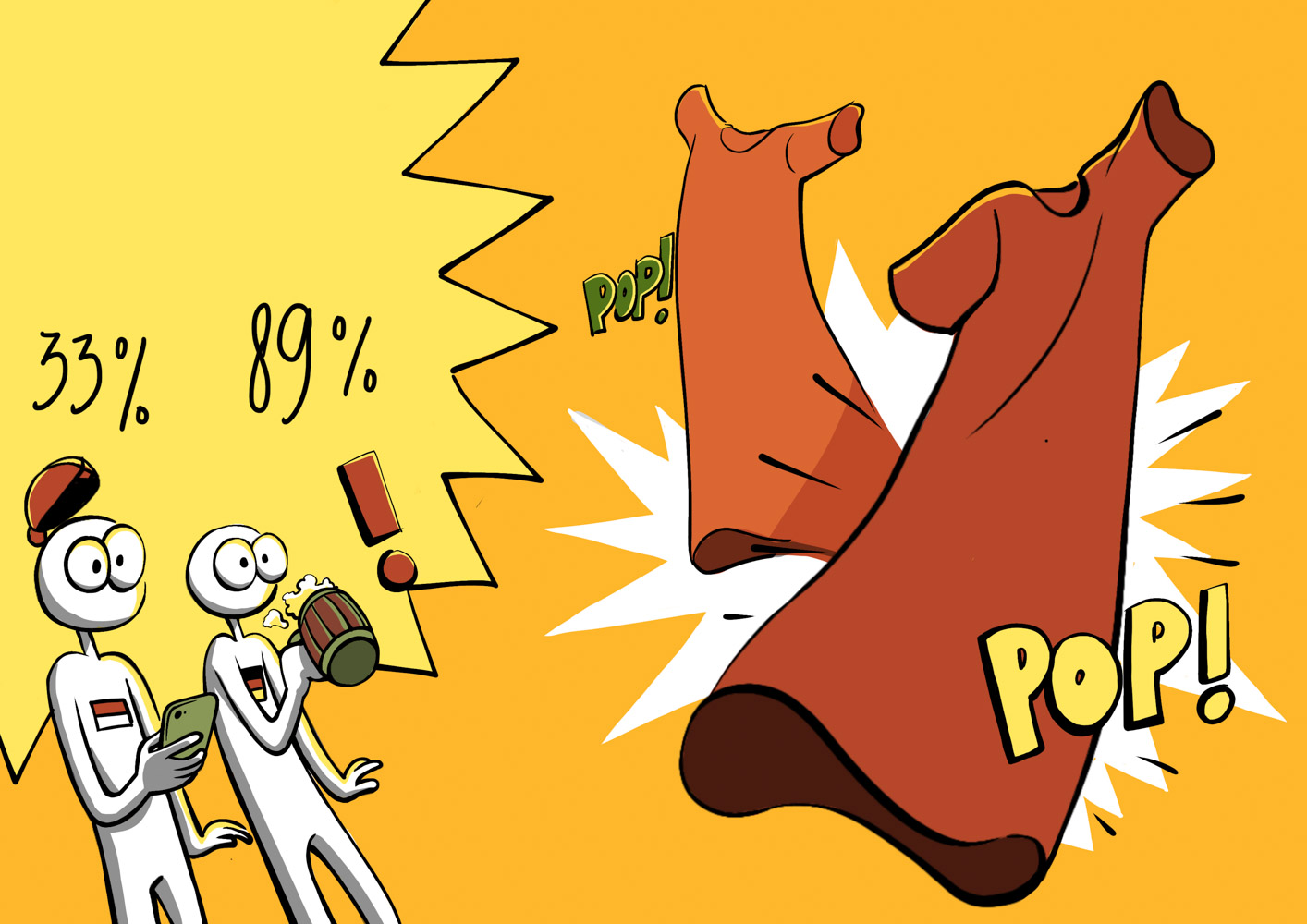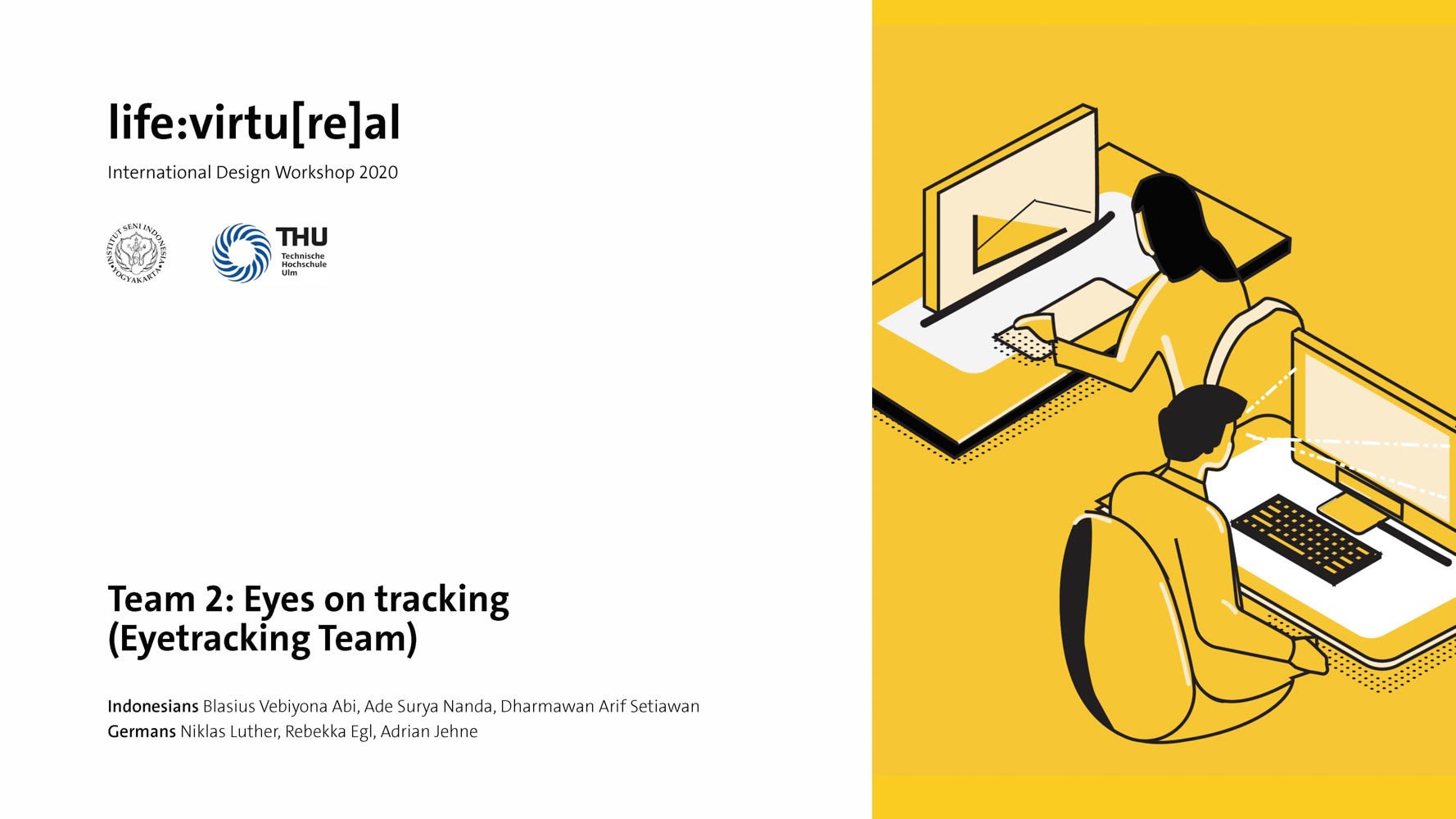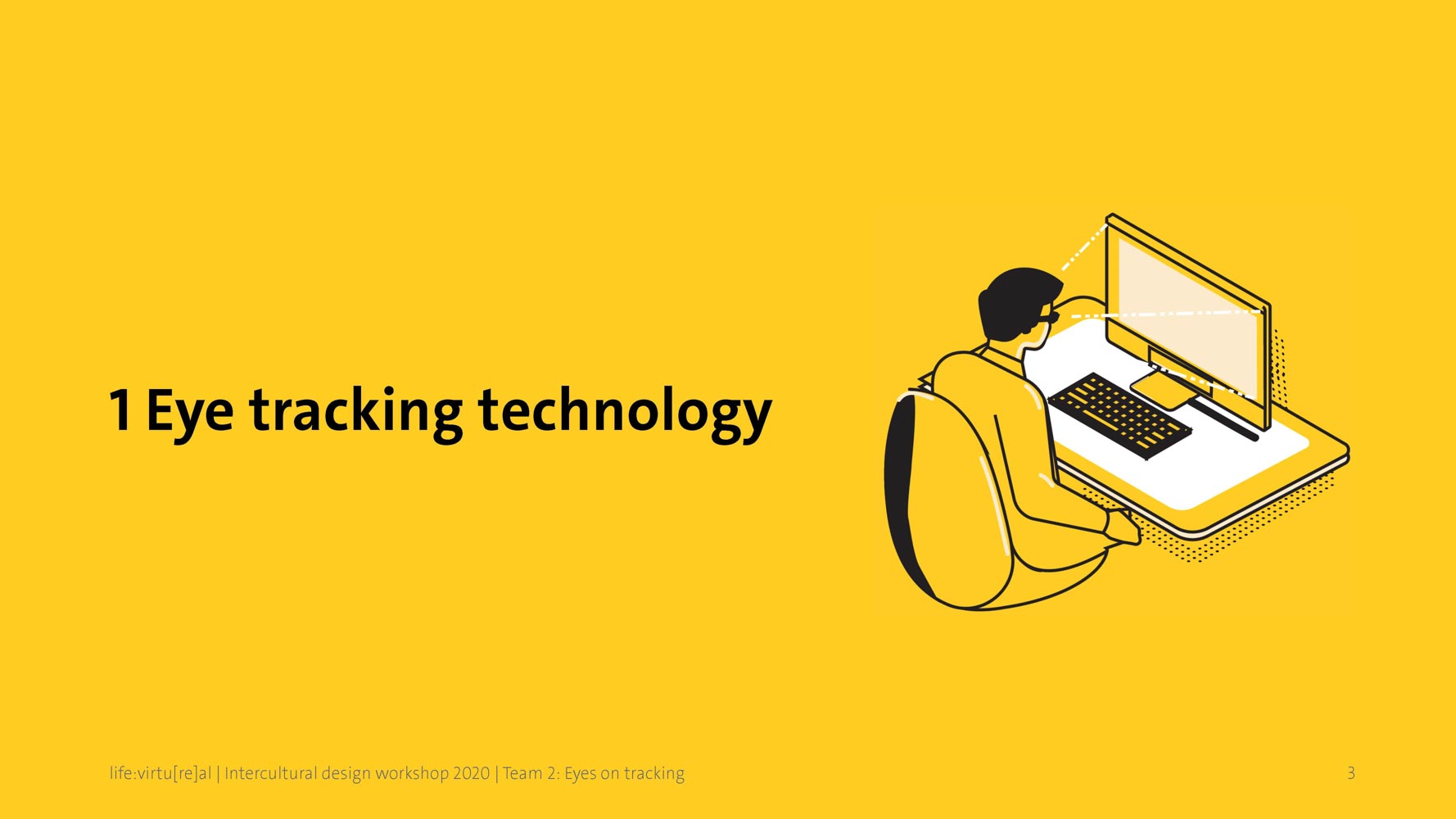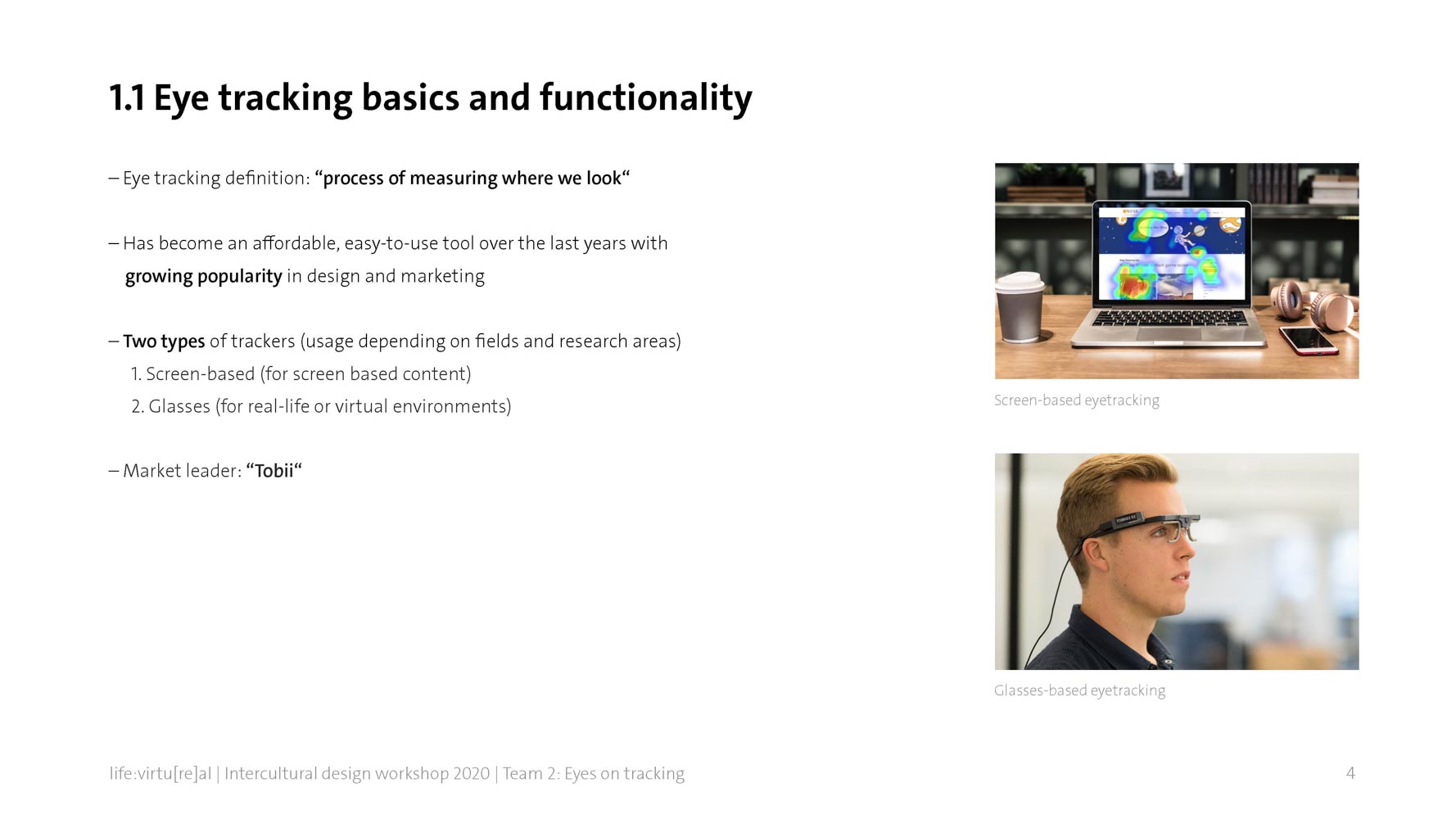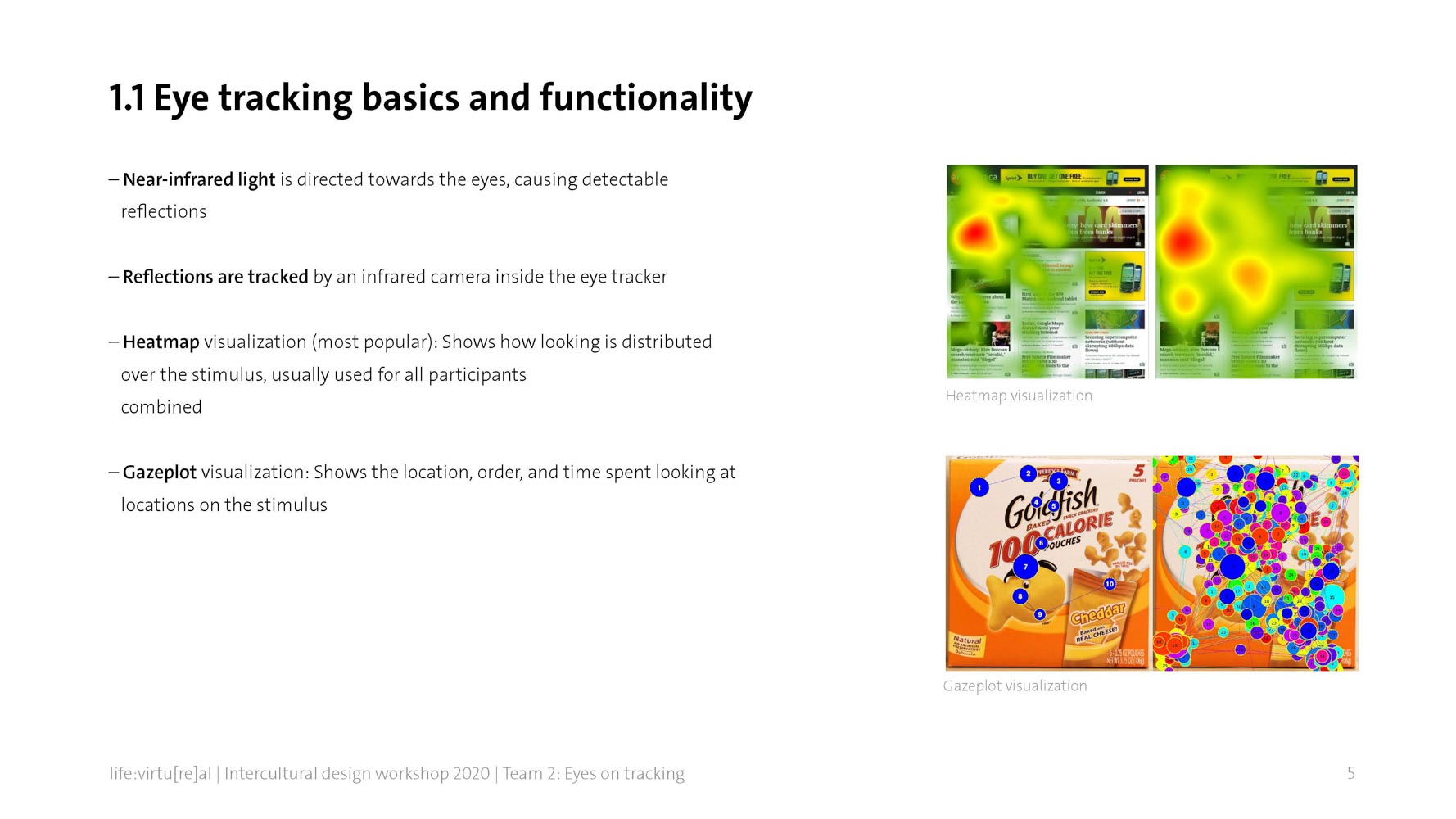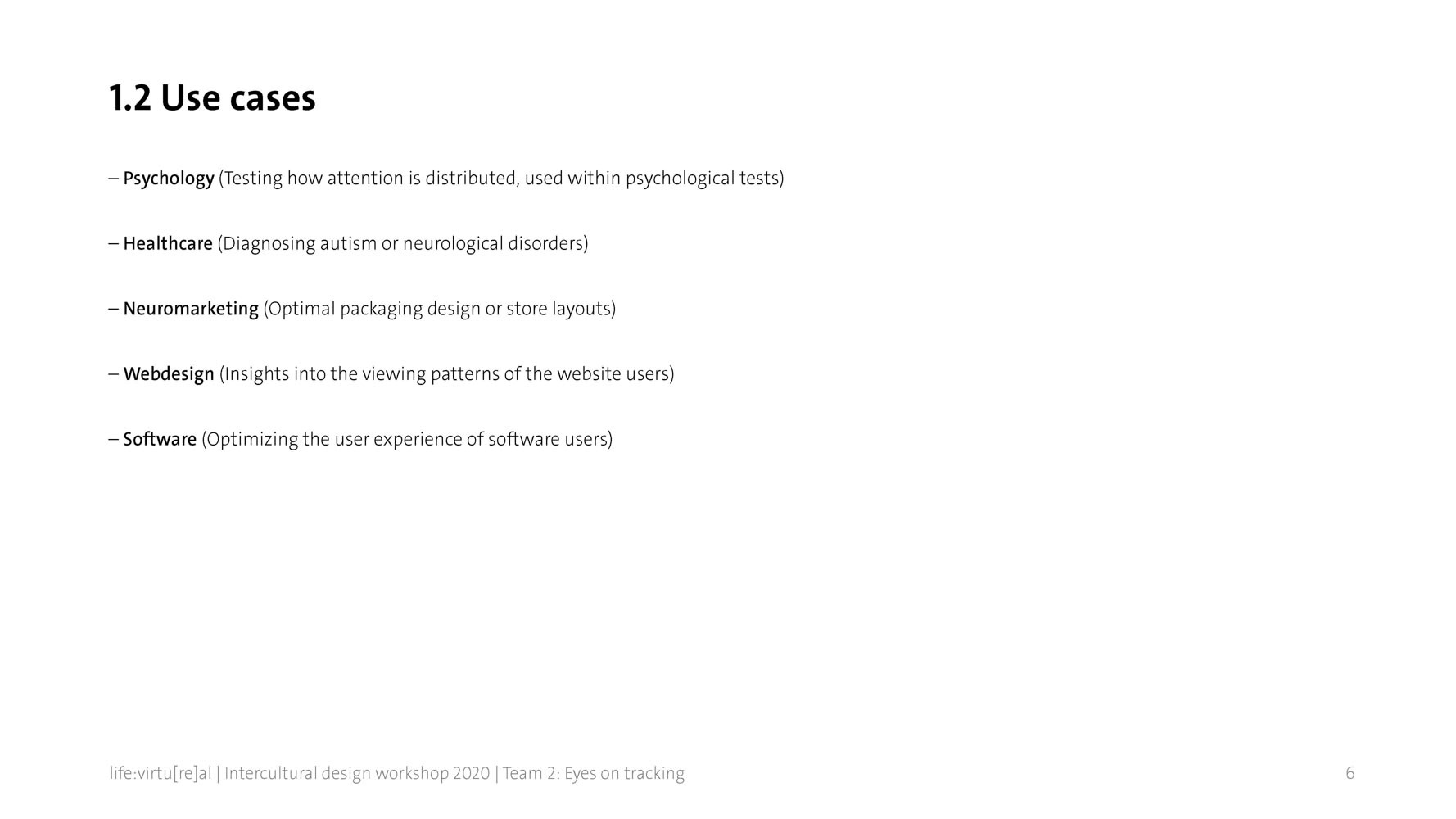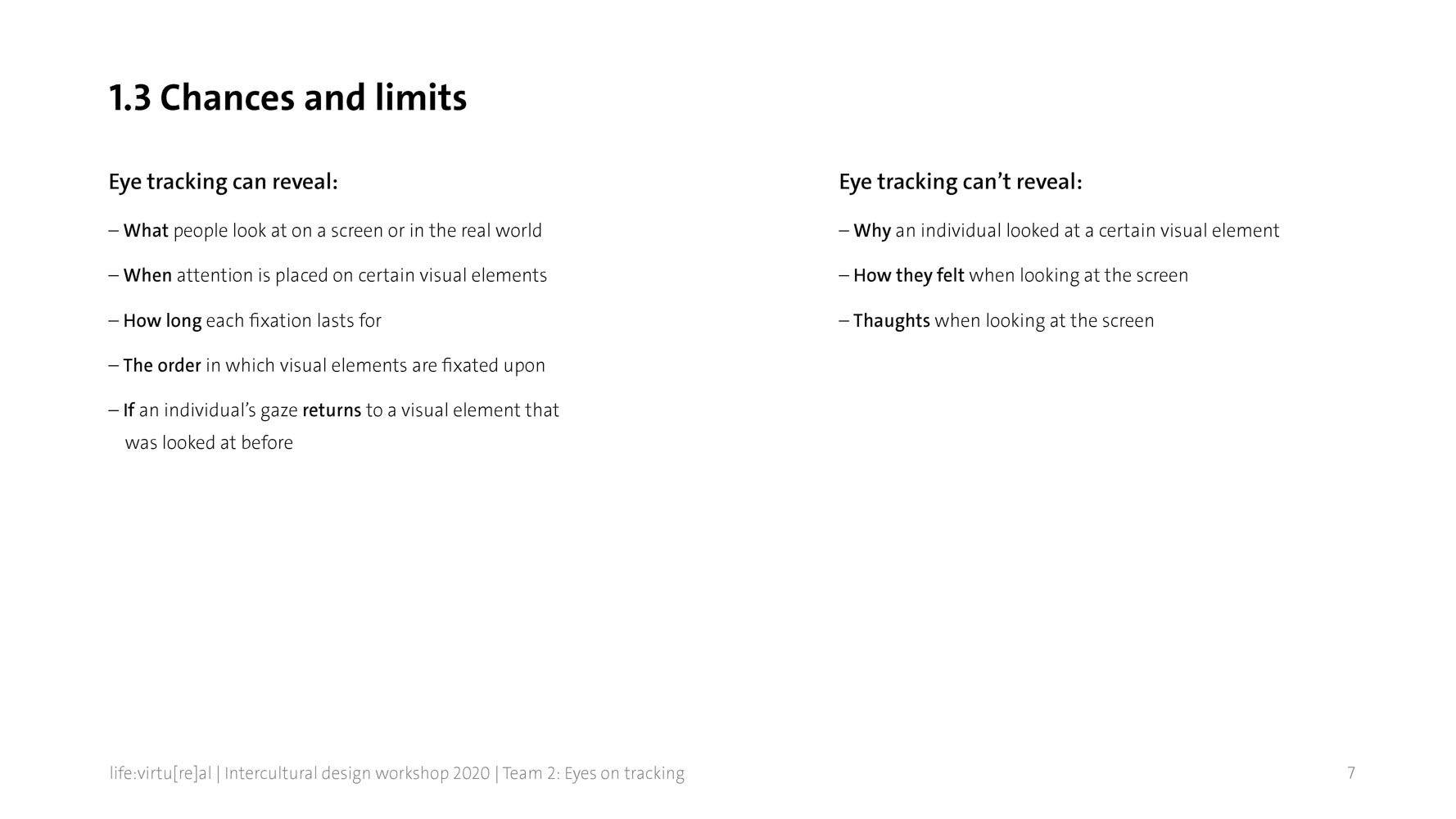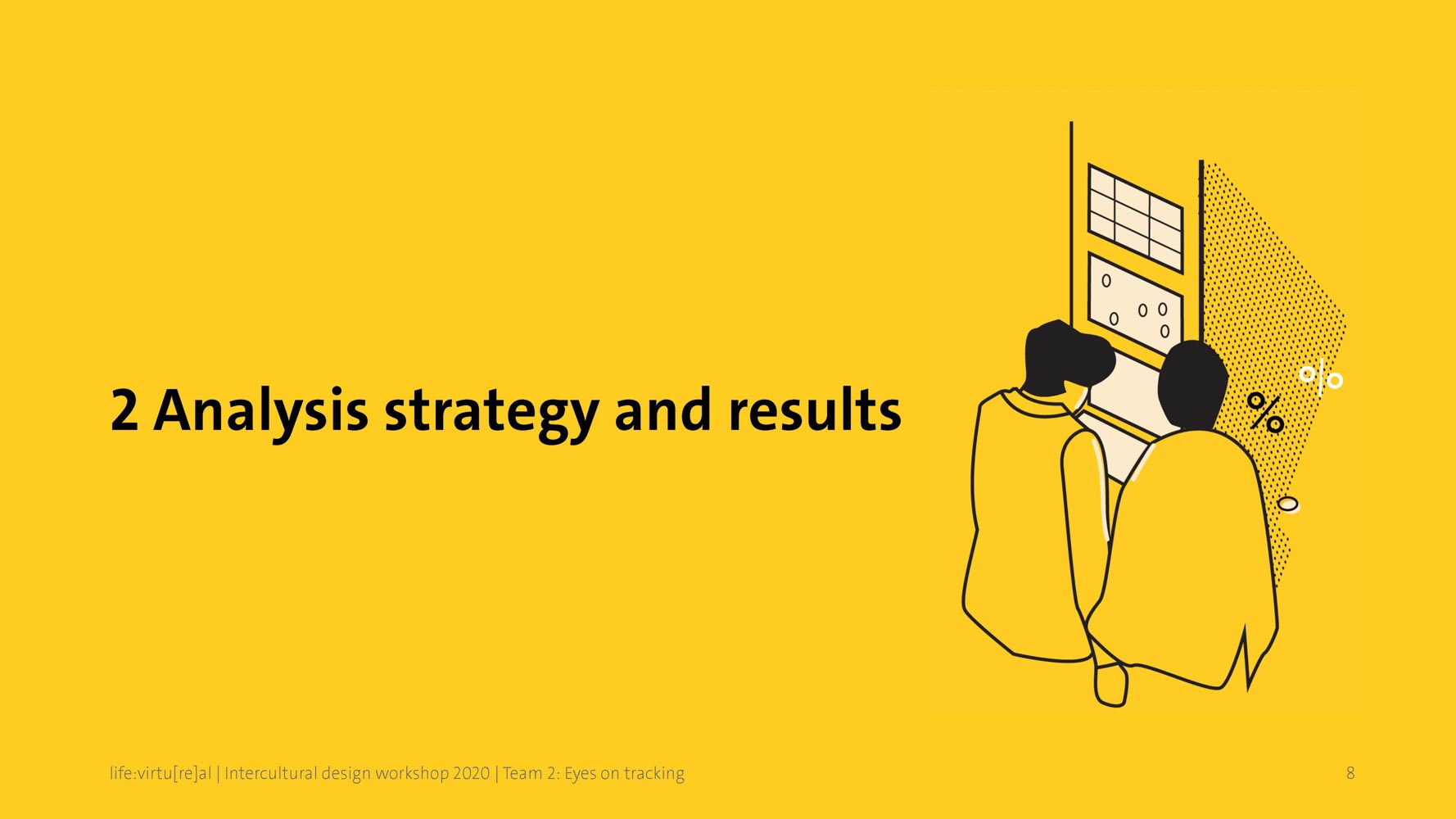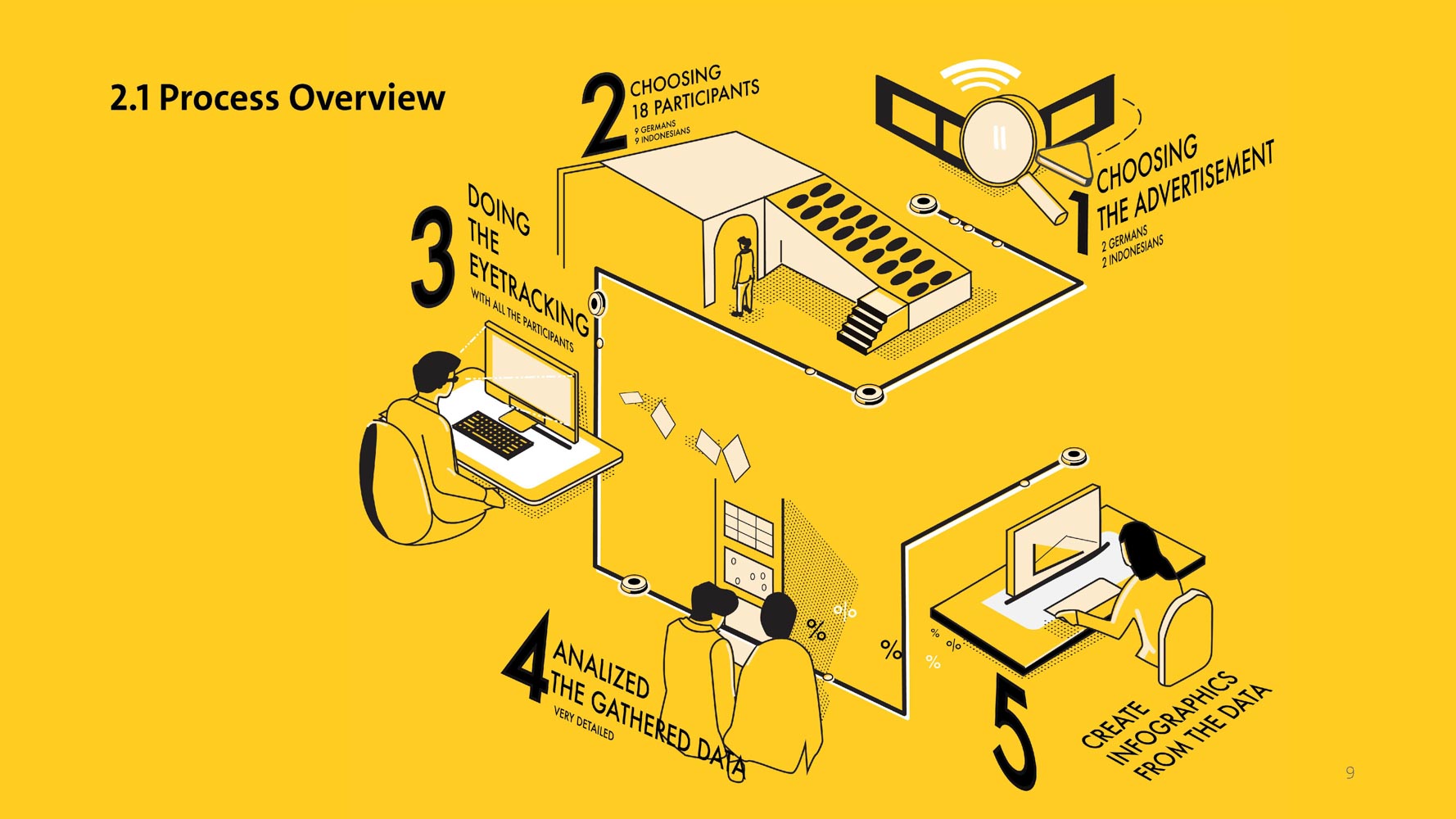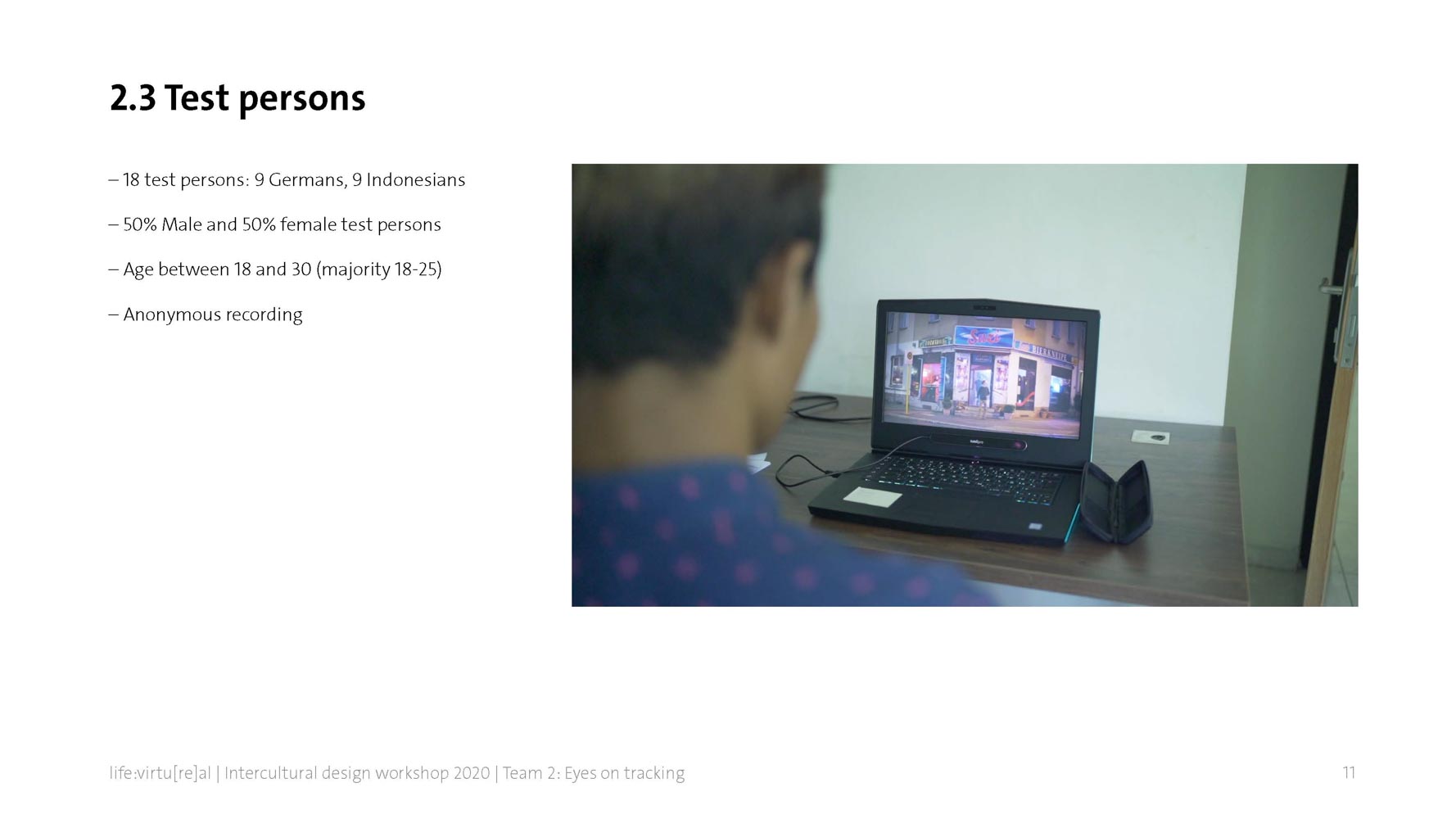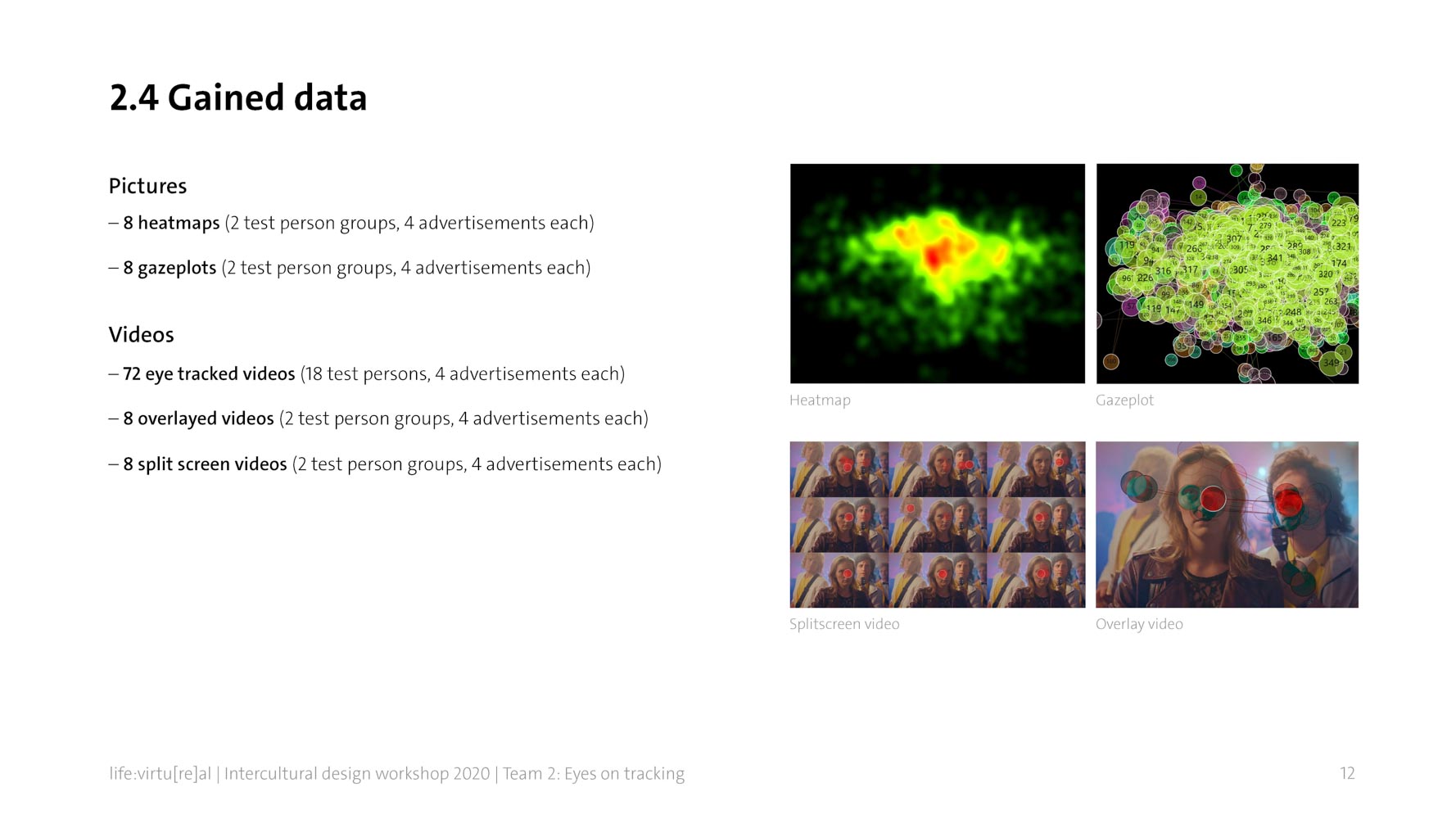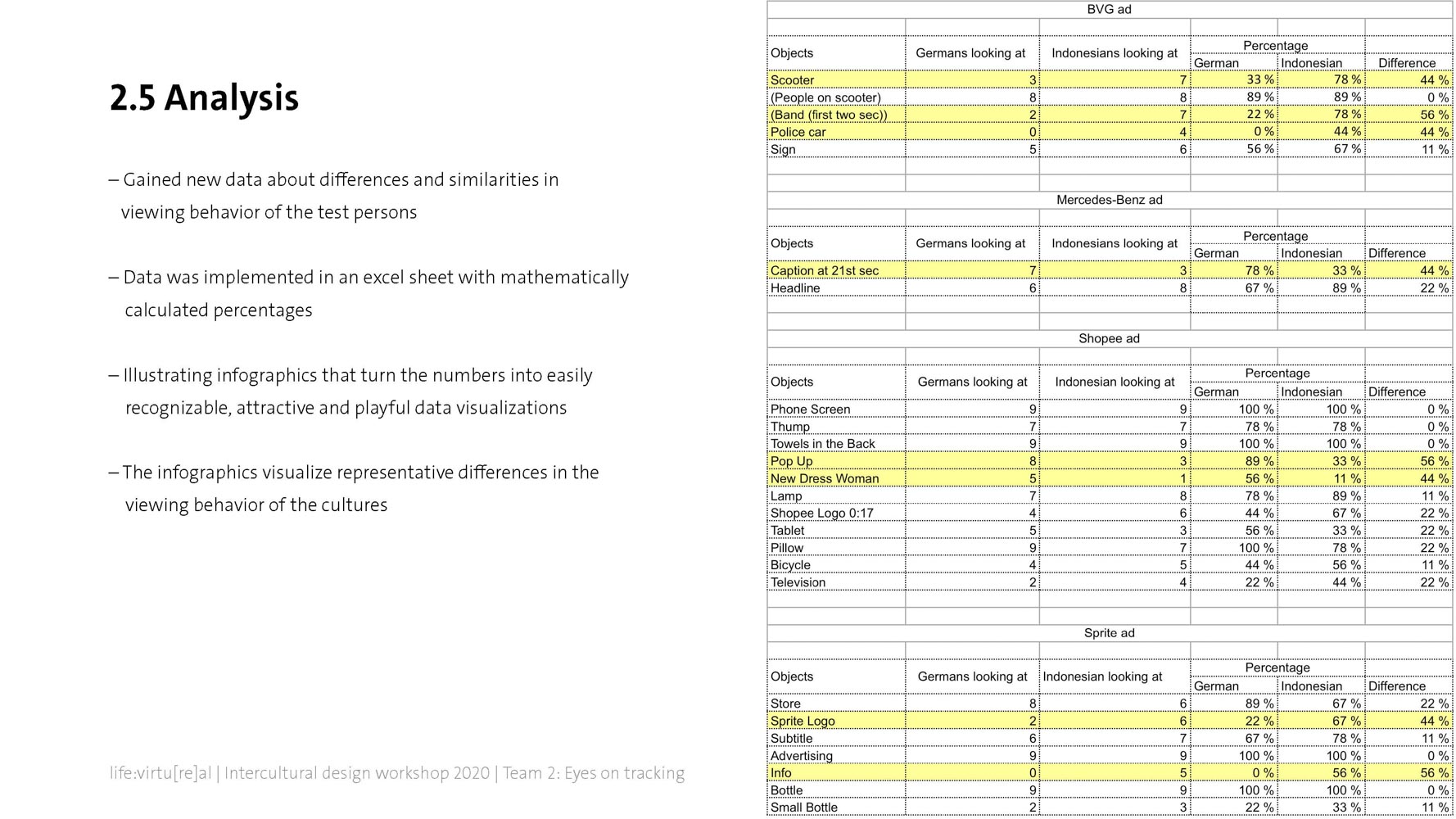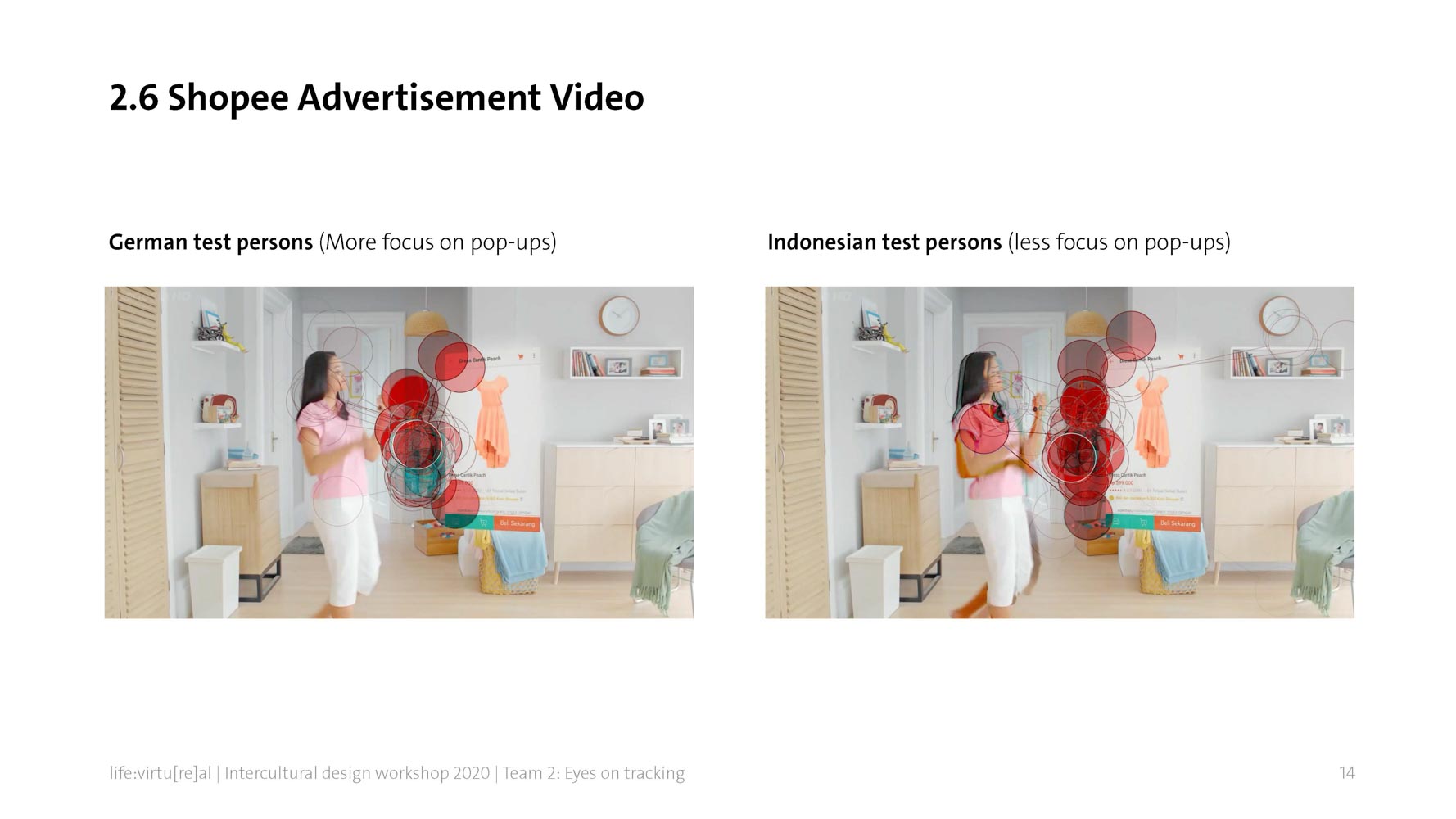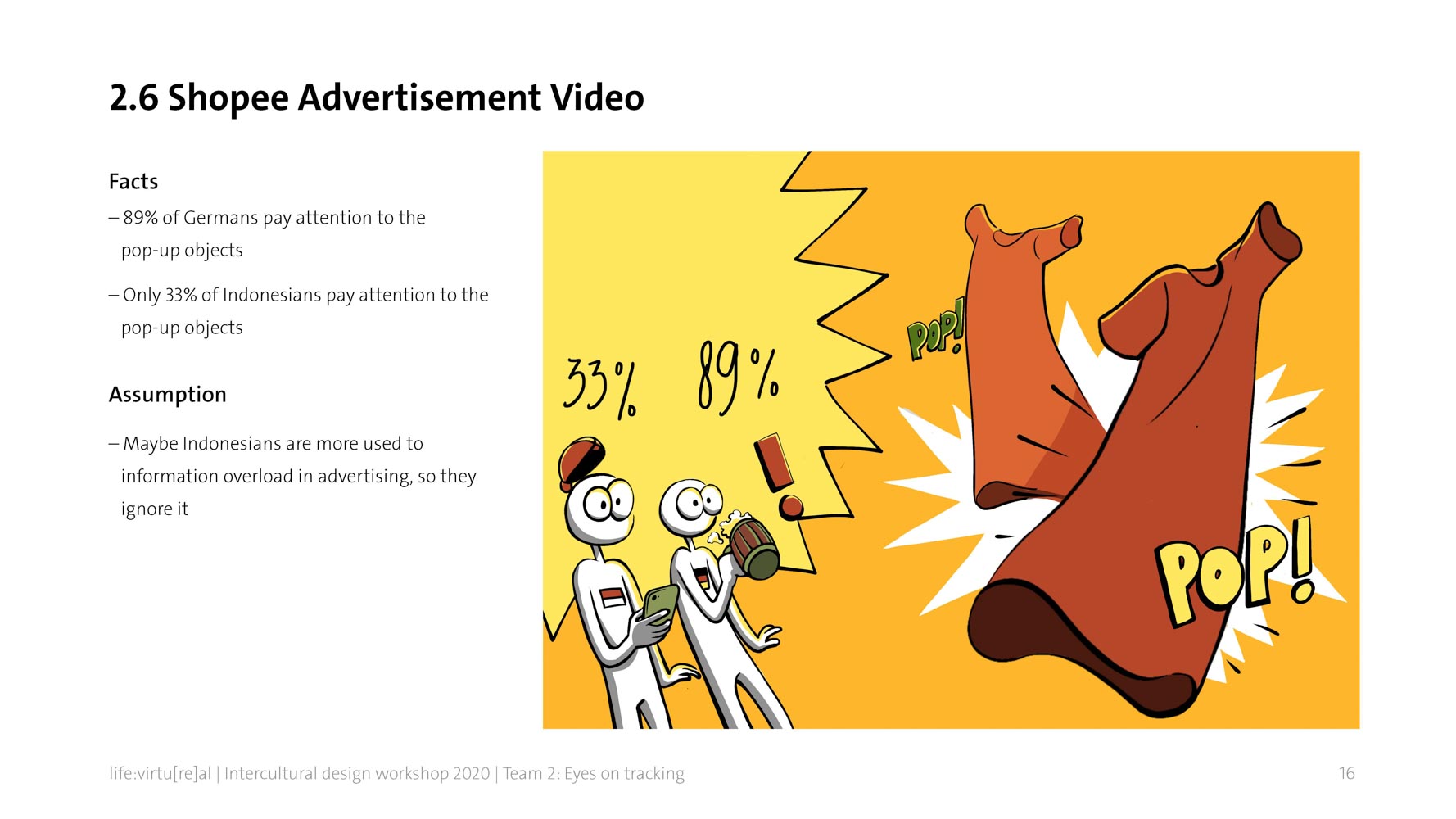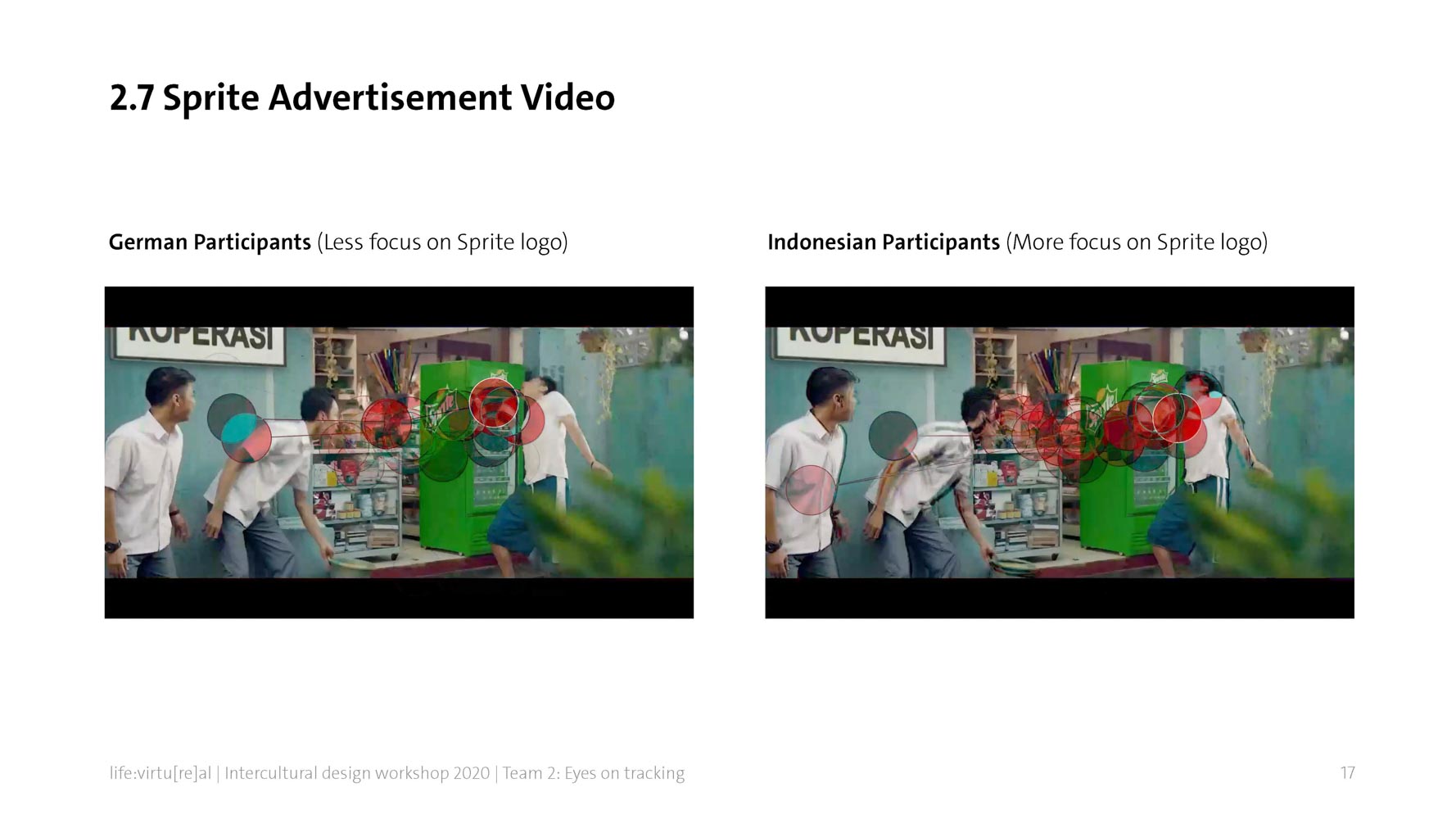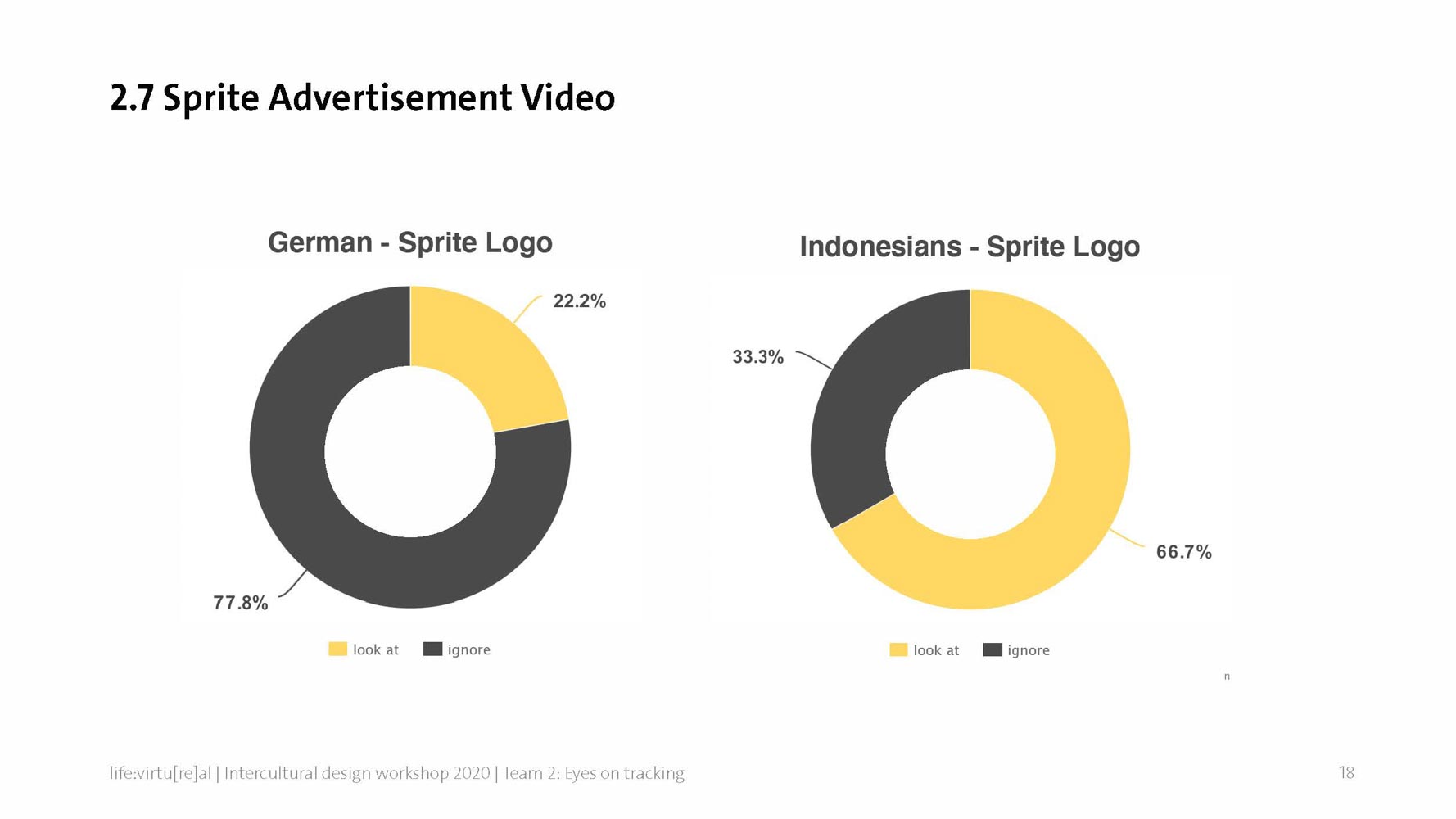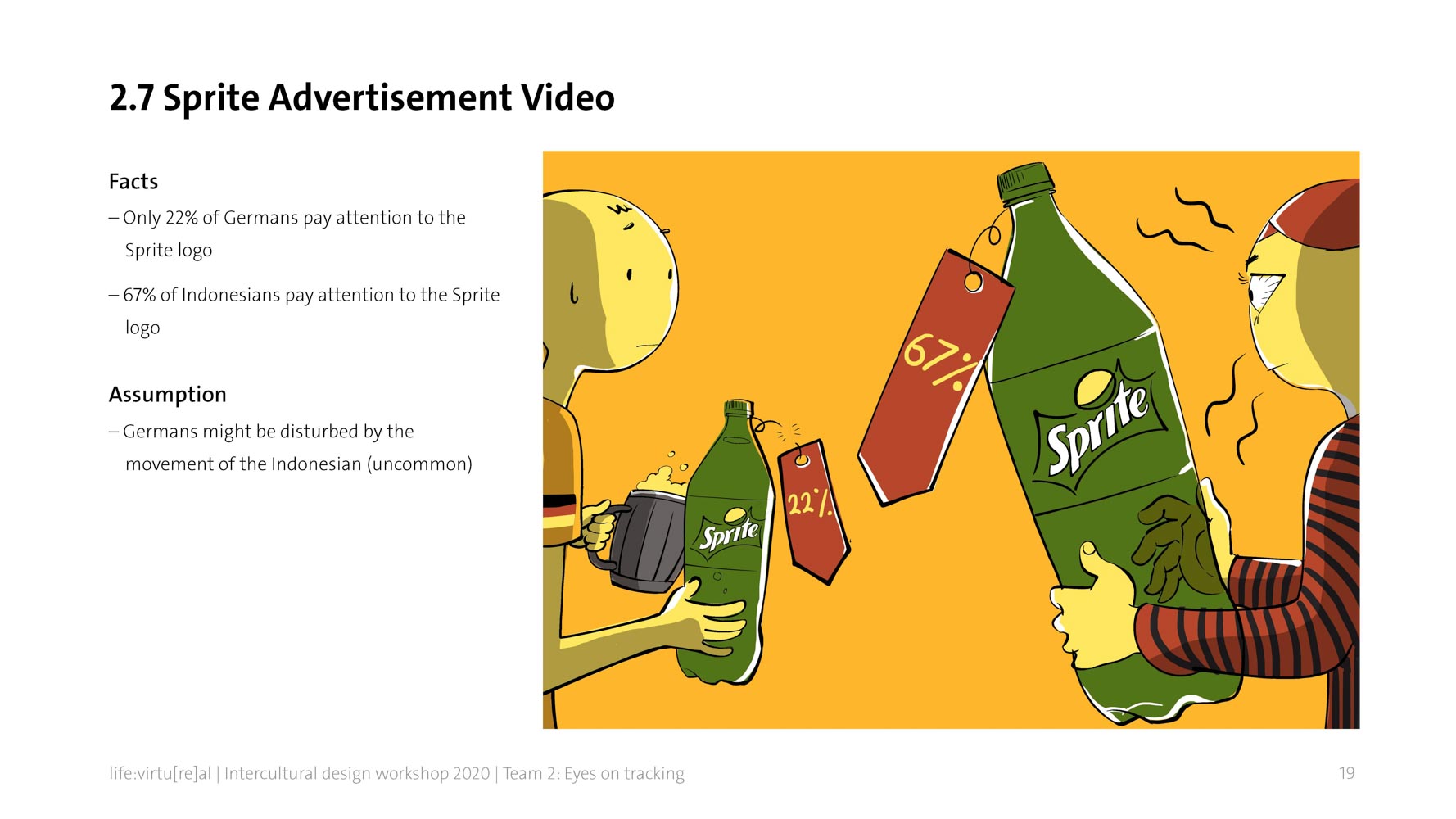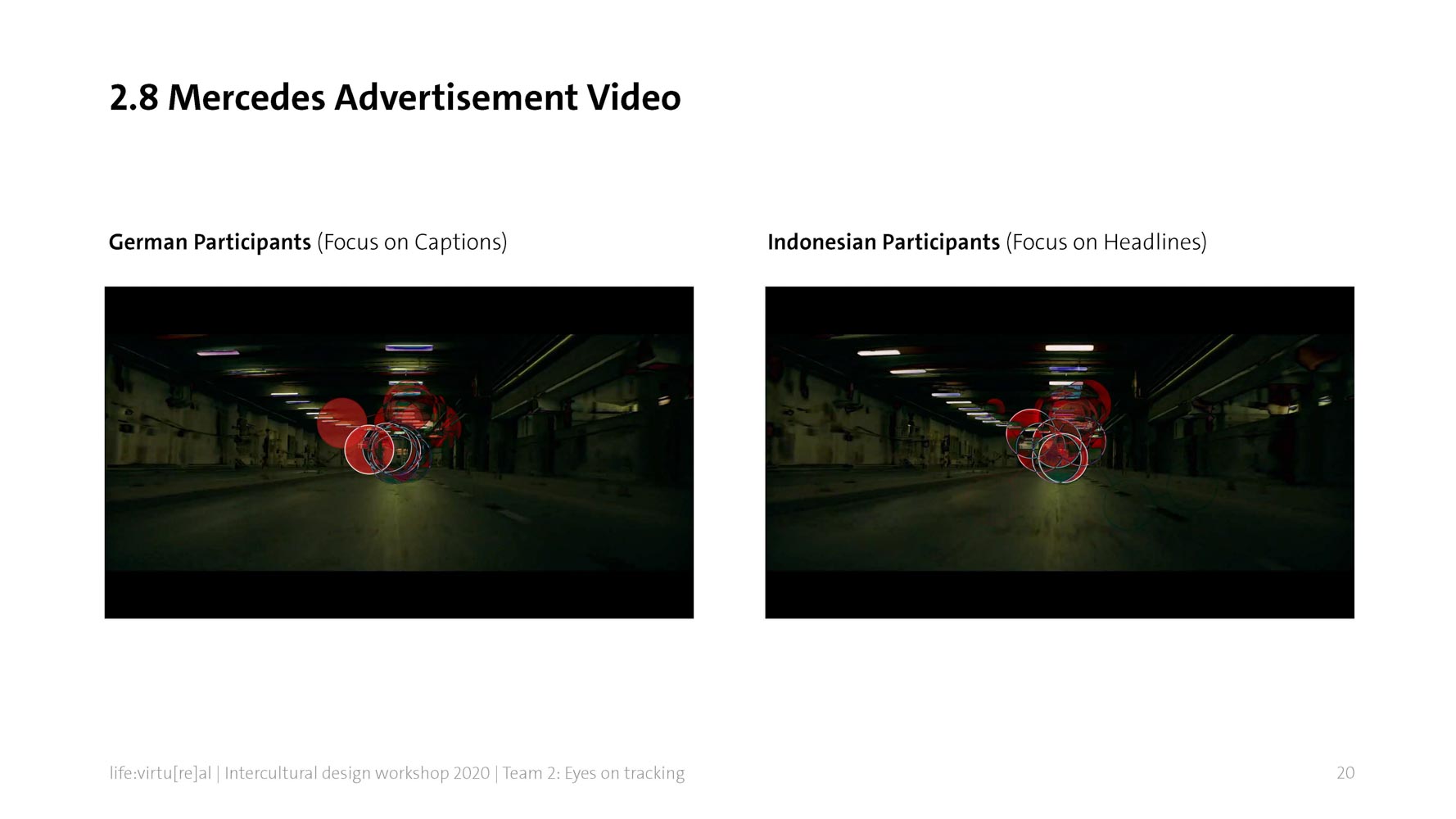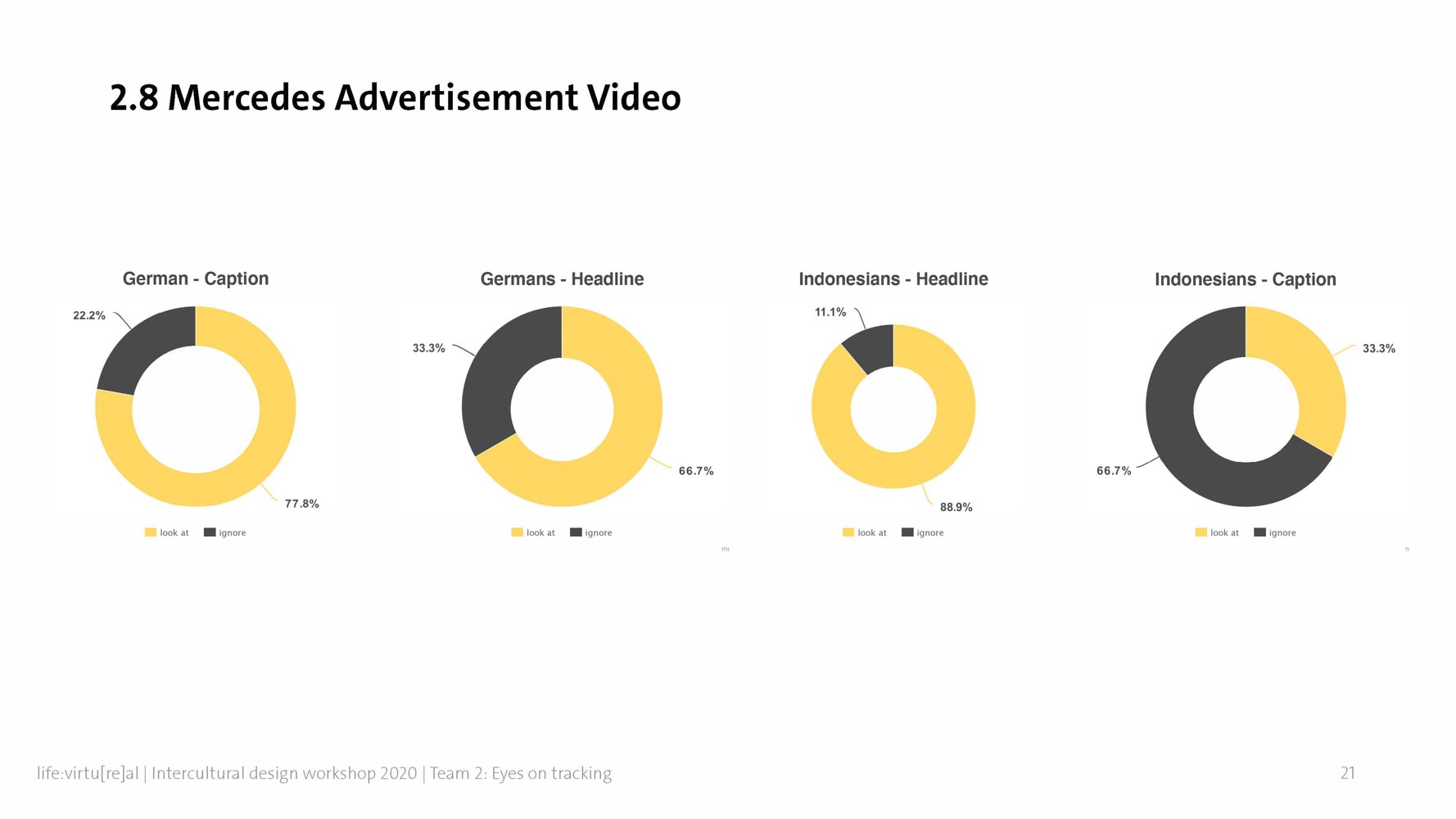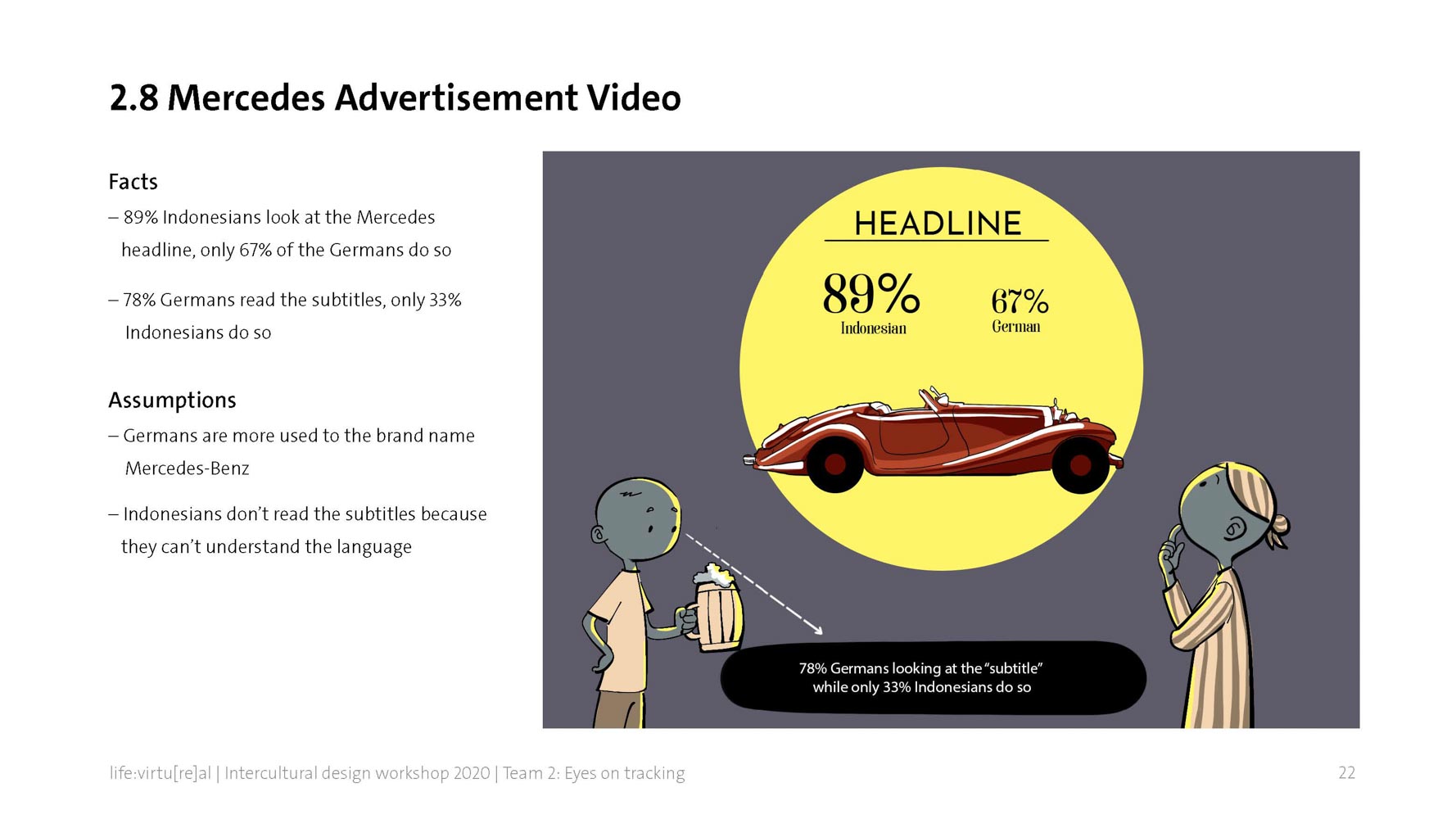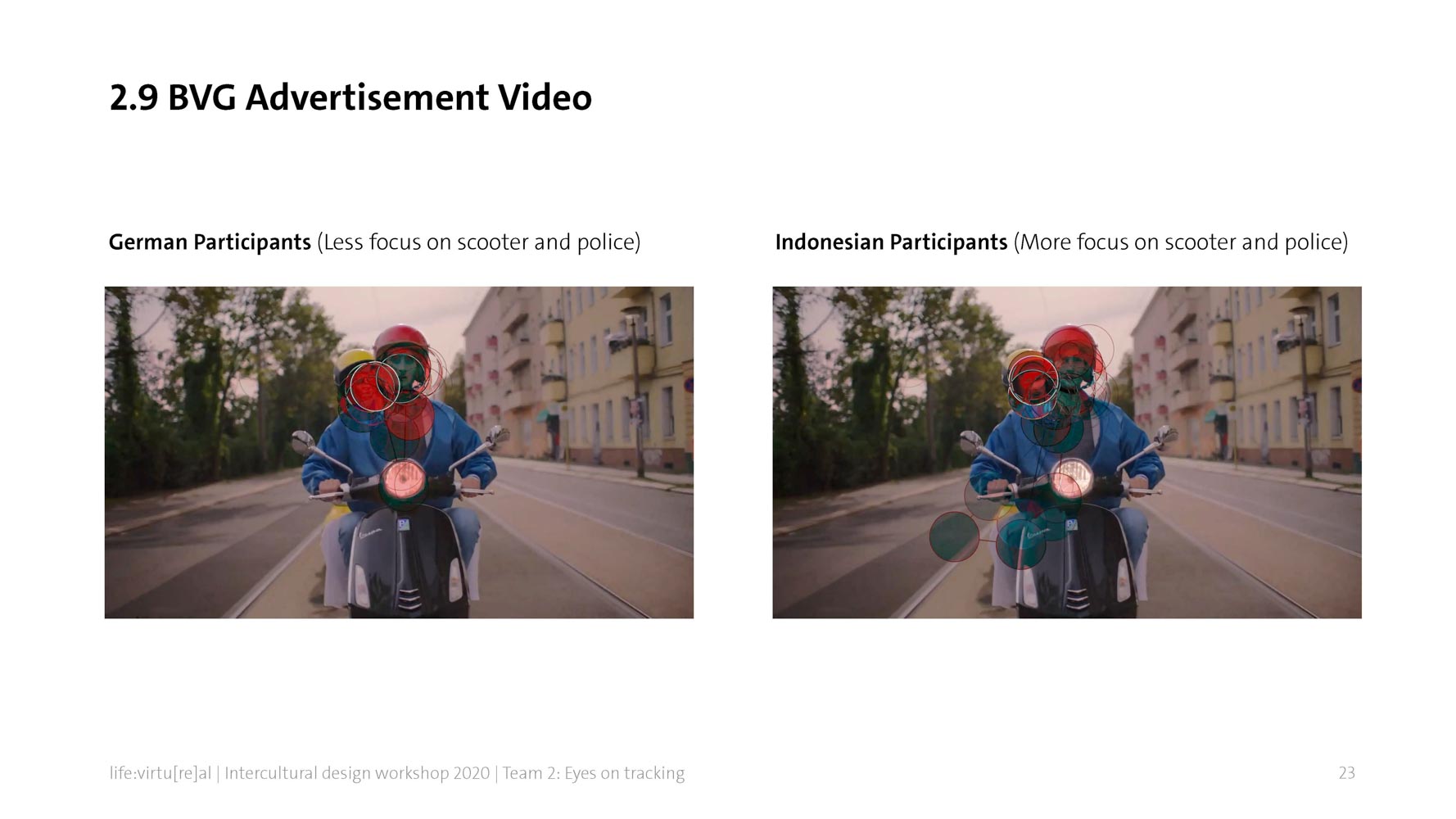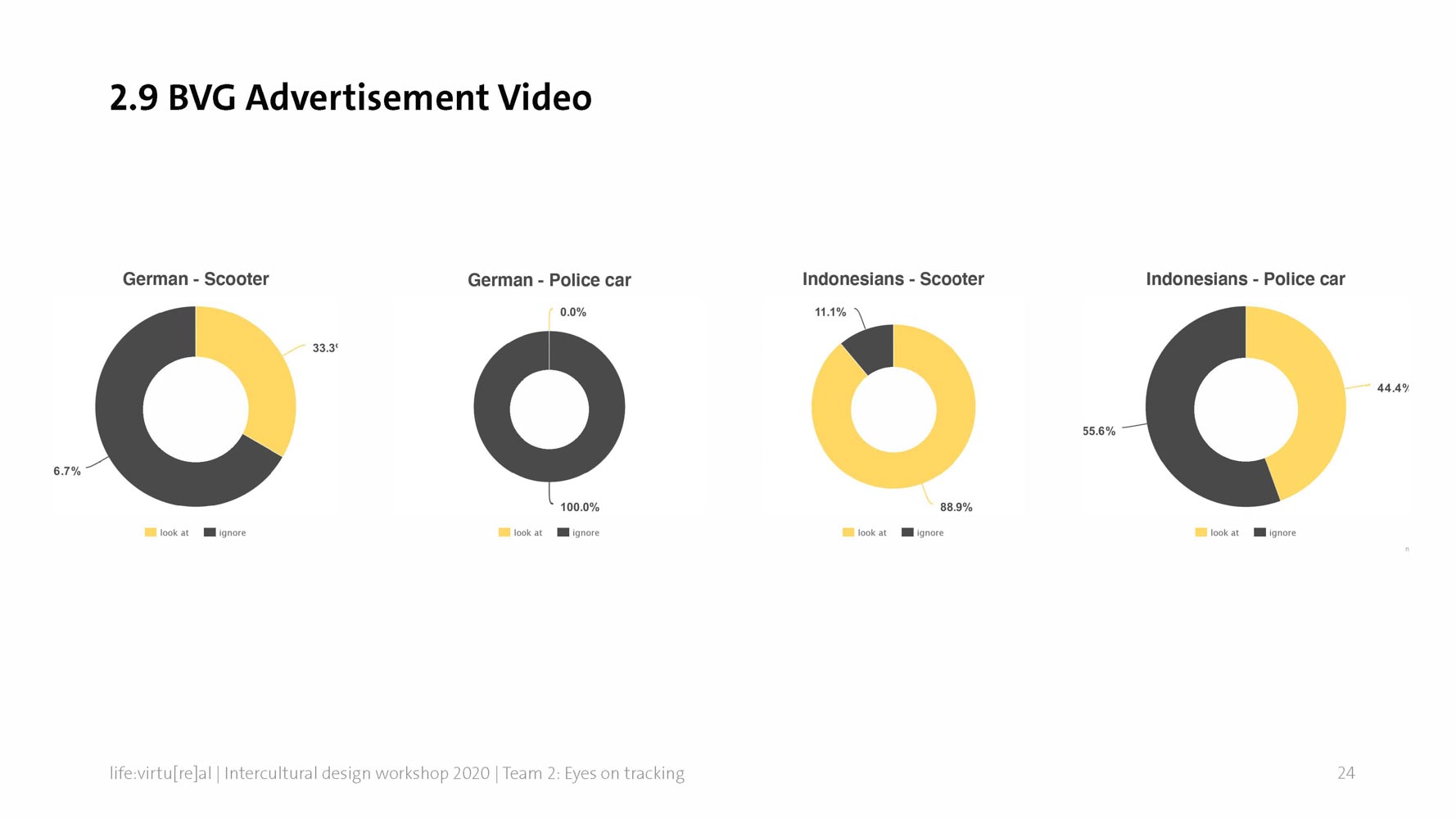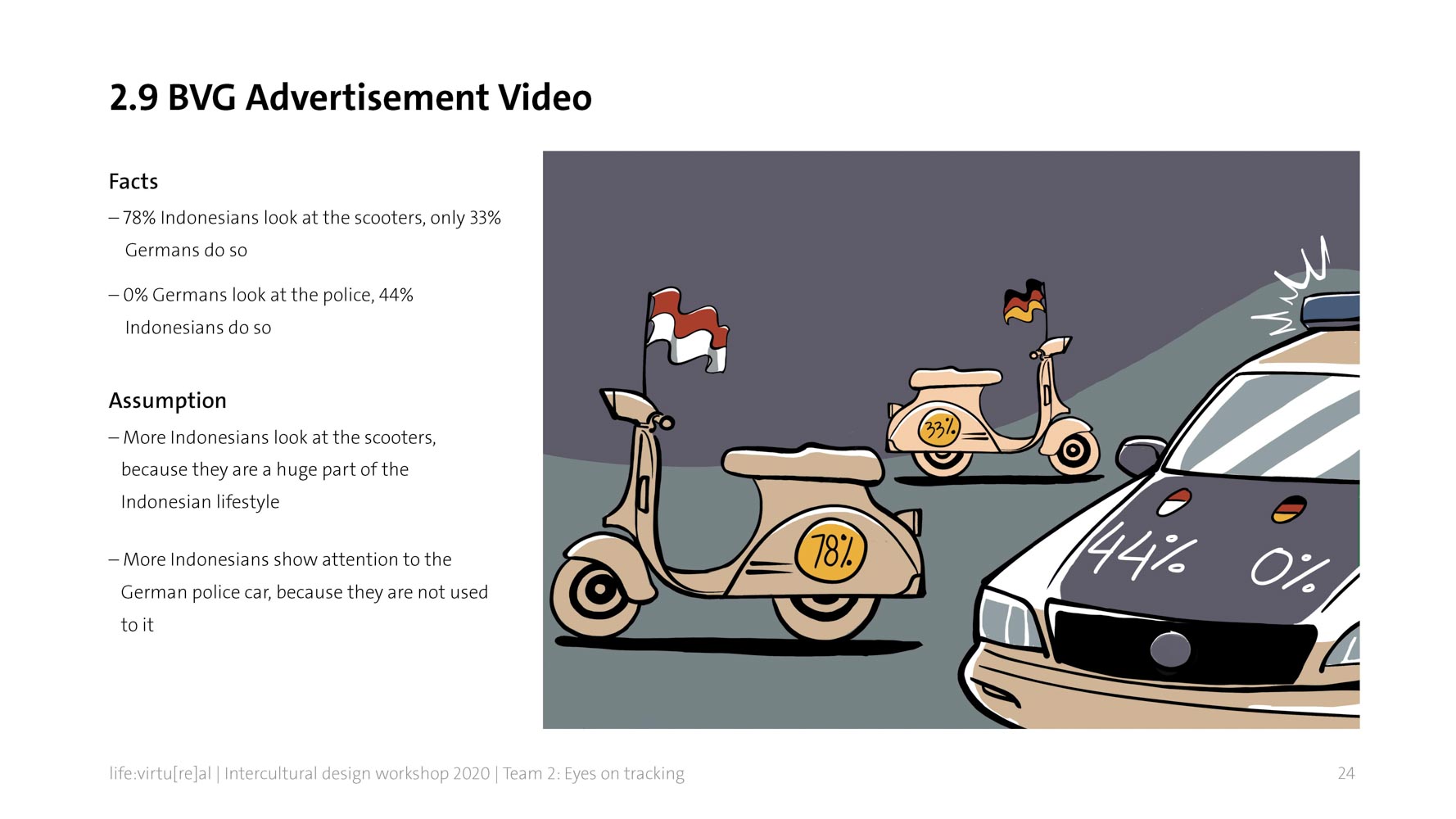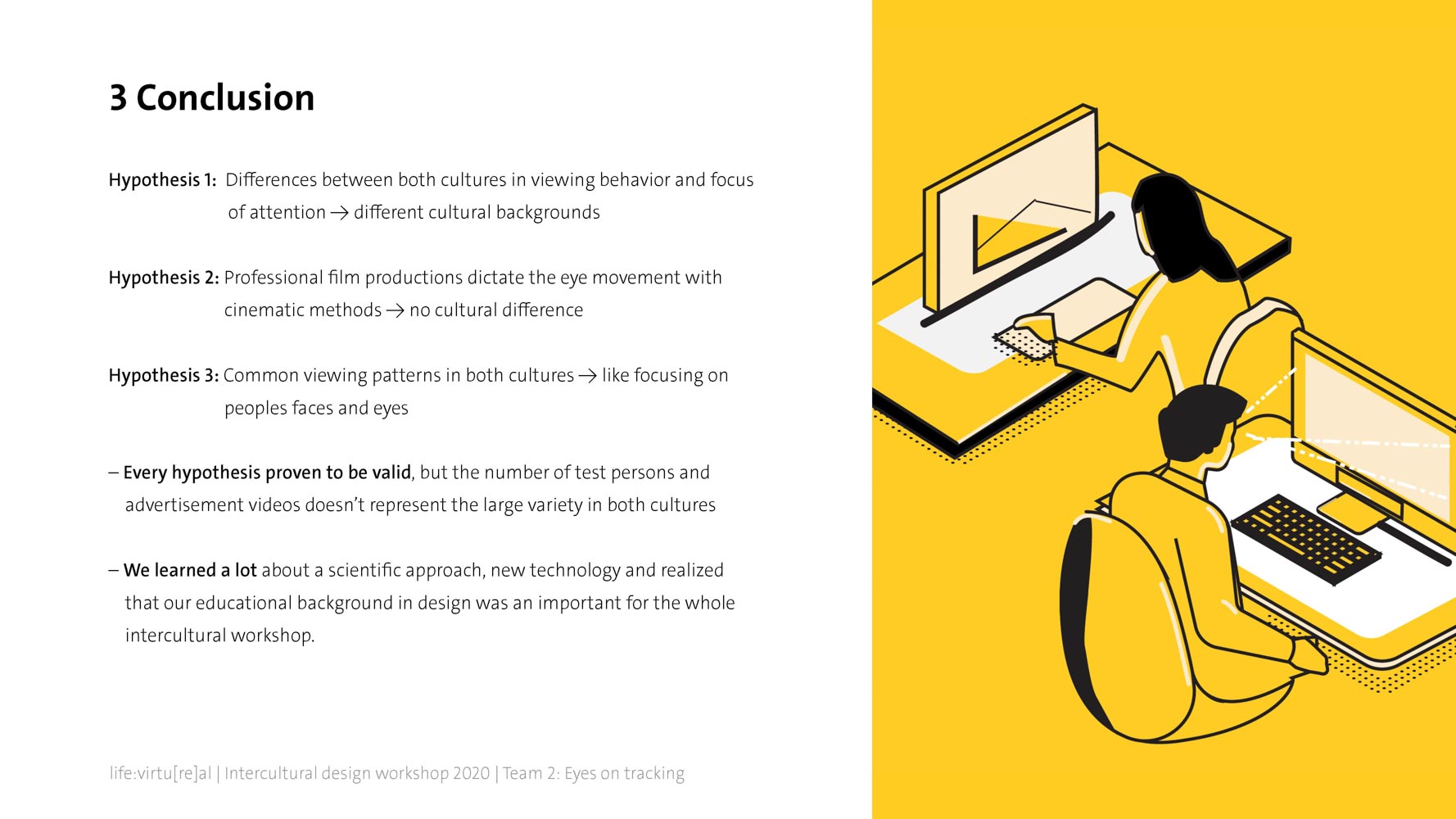One obvious characteristic is that Indonesian and German advertisements are representative of their own culture. While the selected german advertising videos look more professional and have an international high-class mainstream style, the Indonesian videos are more playful, creative and relatively professional as well. The reason for that is the different mindset that these two cultures have when it comes to their specific expectations of entertainment. The Indonesian culture is much more diverse (since it consists of 17 thousand islands) and difficult to analyze. The German culture is predictable, organized, structured but more emotionally distant.
First hypothesis: There are differences between the two cultures in viewing behavior and focus of attention. We assumed that because of the different cultural backgrounds mentioned before.
The second hypothesis: In professional productions, the eye movement of the test persons is dictated by the film production with cinematic methods.
The third hypothesis: There are common viewing patterns in both cultures, such as focusing on peoples’ faces and eyes
Every hypothesis was proven to be valid, but we know that the number of our test persons is too small. Also, the number of advertisement videos doesn’t represent the large variety in both cultures.
The benefit for us was, to learn a lot about a scientific approach while using new innovative technology. The project was highly complex. We realized that our educational background in design was an important prerequisite for the whole intercultural workshop.
